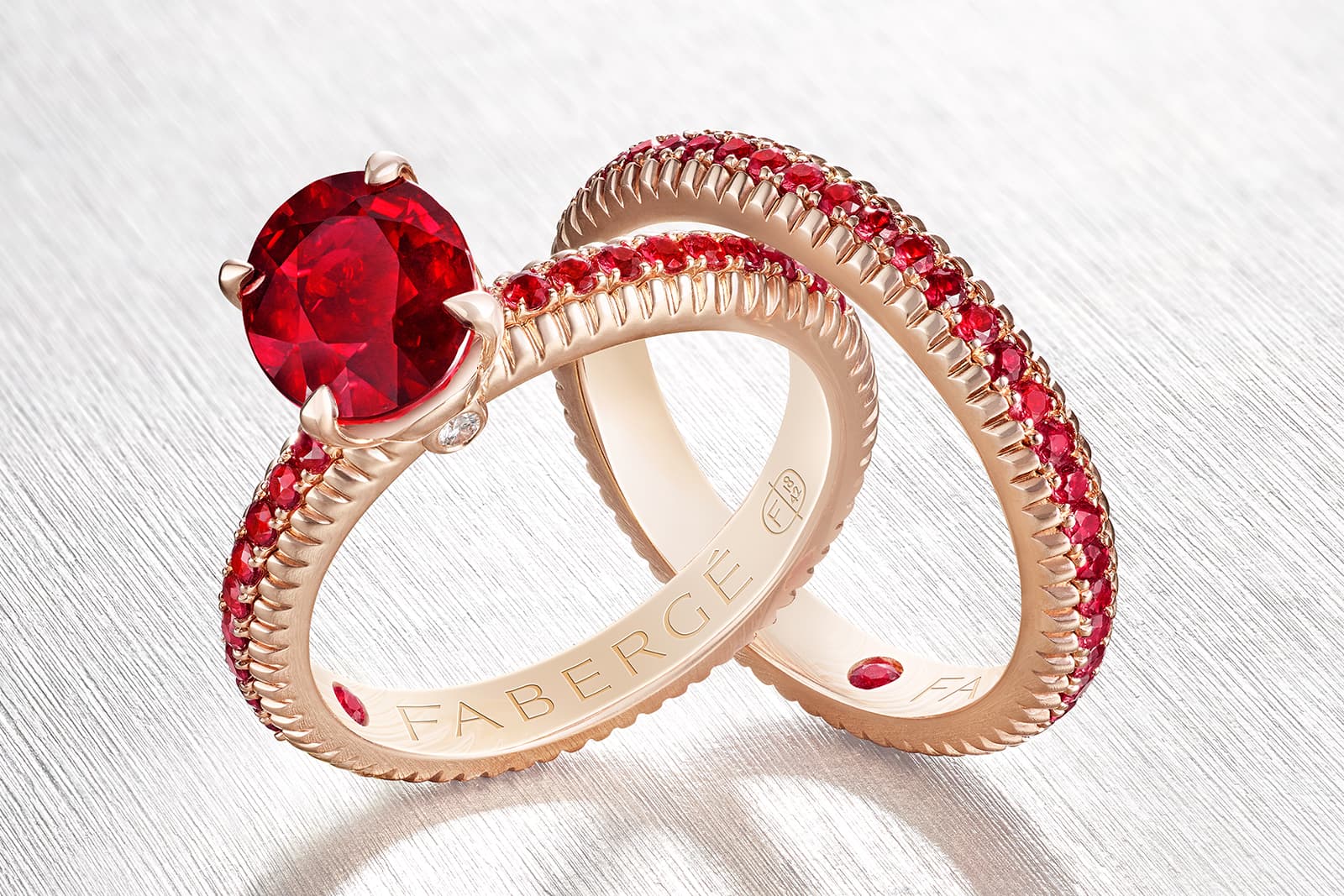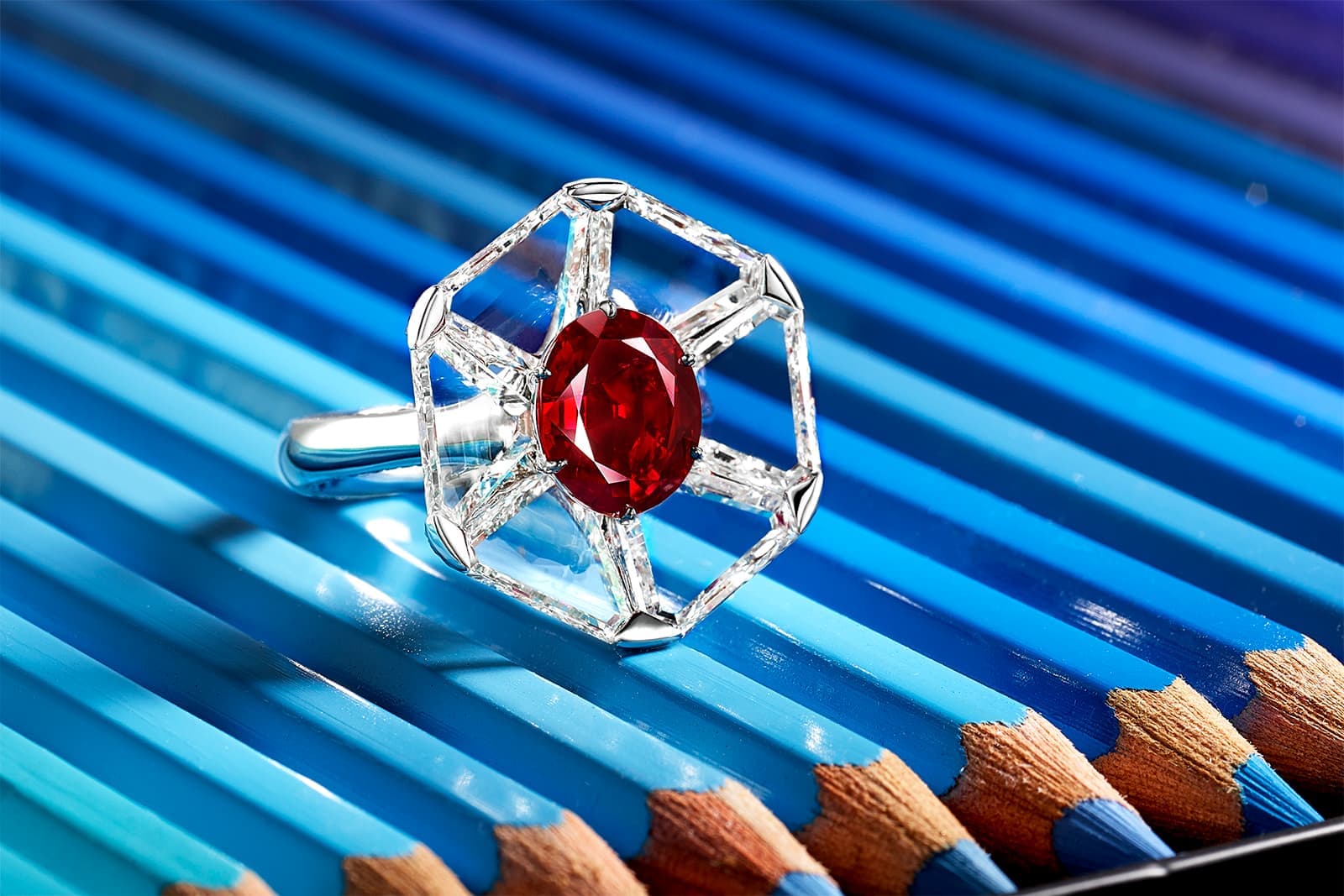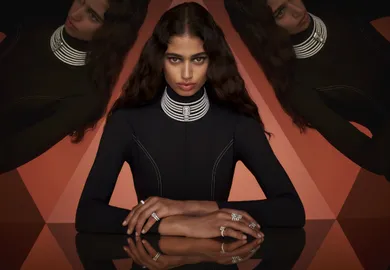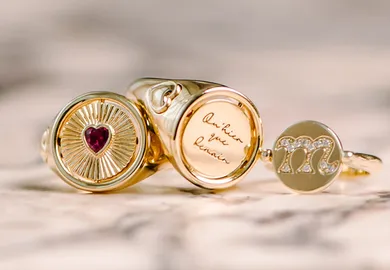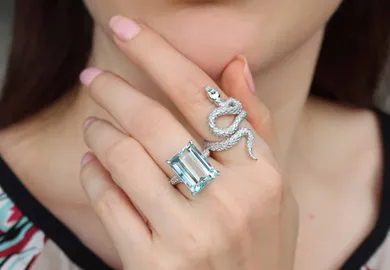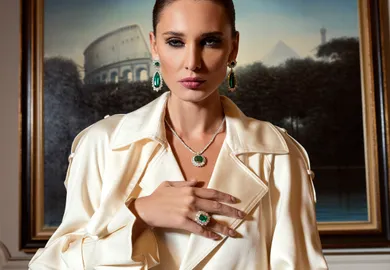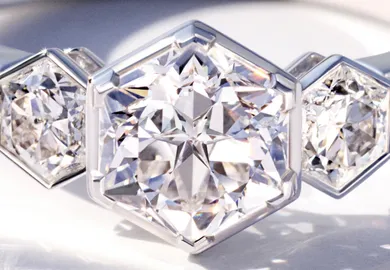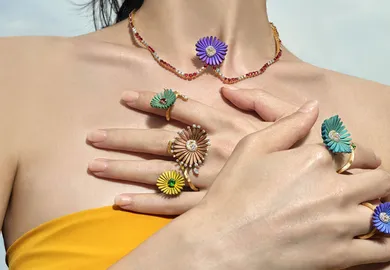

Birthstone Jewellery: Sumptuous Rubies Celebrate July
Known as the ‘King of Gems’, the ruby is one of the most revered and commonly known gemstones; in the ancient language of Sanskrit, ruby is called ratnaraj, or “king of precious stones.”
Owing to the rarity of the perfect ruby tone – pigeon blood: a deep, rich red with the slightest hint of blue – the most sought after rubies are worth more per carat than diamonds. The standard for exceptional rubies is Burmese provenance, with no heat treatment – which would alter the saturation of colour in the gemstone. Beautiful rubies from other sources still command large sums if their colour and clarity is of high quality, but rubies mined in the Mogok valley tend to be considered as having the most supreme visual characteristics of all, with this country having been a ruby source since at least 600 AD.
Because of its popularity and widespread appeal of ruby through the ages, ruby is one of the most historically significant coloured gemstones – being mentioned four times in the Bible. Over centuries, numerous attributes have been attached to rubies: ancient Hindus believed offering rubies to the god Krishna meant that you were granted rebirth as an emperor; in India, people believed that rubies enabled their owners to live in peace with their enemies; in Burma (now Myanmar,) warriors believed rubies made them invincible in battle. Later in world history, ruby continued to be regarded by the Western world as important, becoming one of the most desirable gems for European royalty and those in high standing – with many medieval Europeans wearing rubies in an attempt to guarantee health, wealth, wisdom, and success in love.

Gübelin ‘Wings of a Dragonfly’ transformable necklace with 10.64ct Burmese ruby and 13 cushion cut diamonds, 43 fancy cut diamonds and 1788 round brilliant cut diamonds totalling 19.49ct
Ruby is one of the ‘big three’ traditionally recognised precious gemstones, alongside emerald and sapphire. The result of this is that almost every single fine jewellery house has created at least one – of not many ruby designs within the canon of collections. The most famous luxury maisons in particular – such as Van Cleef & Arpels, Bulgari, Chopard, Dior, and Chanel – always include a ruby piece within their latest lines; especially the most glamorous, red carpet ready creations…
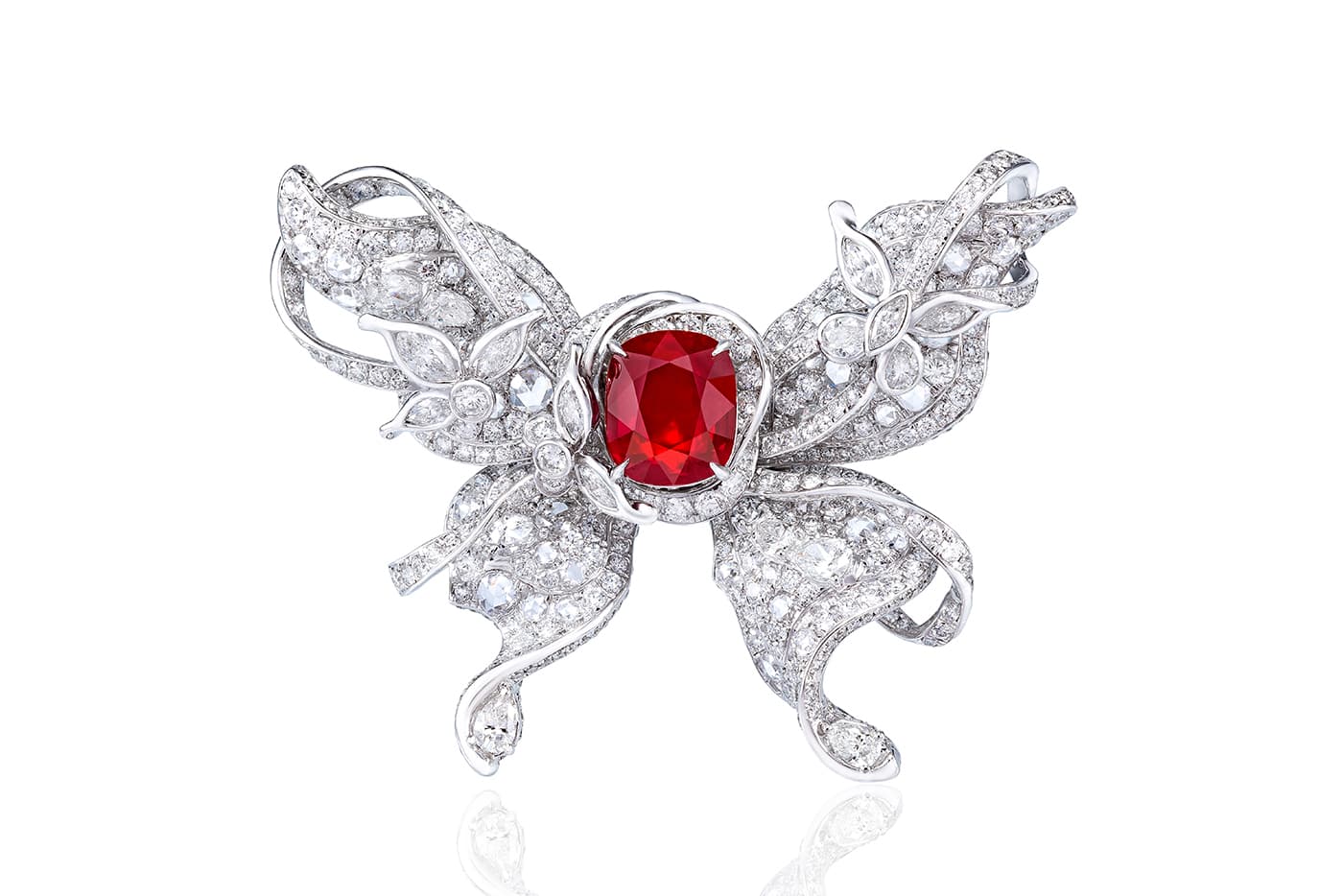
Anna Hu
Anna Hu
‘Le Papillon’ ring with central ruby and diamonds in white gold
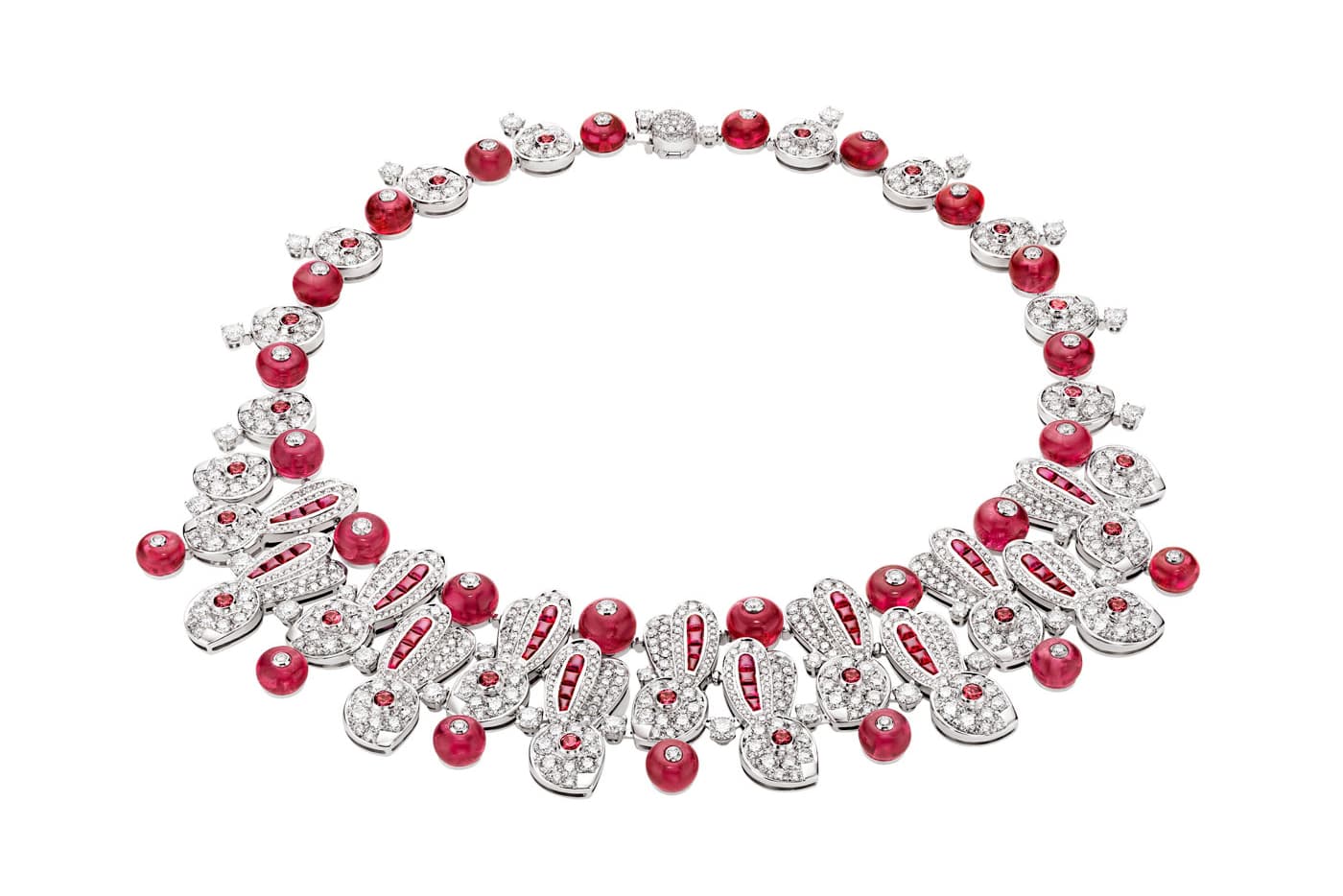
Bulgari
Bulgari
‘Cinemagia’ collection necklace with rubies and diamonds in white gold
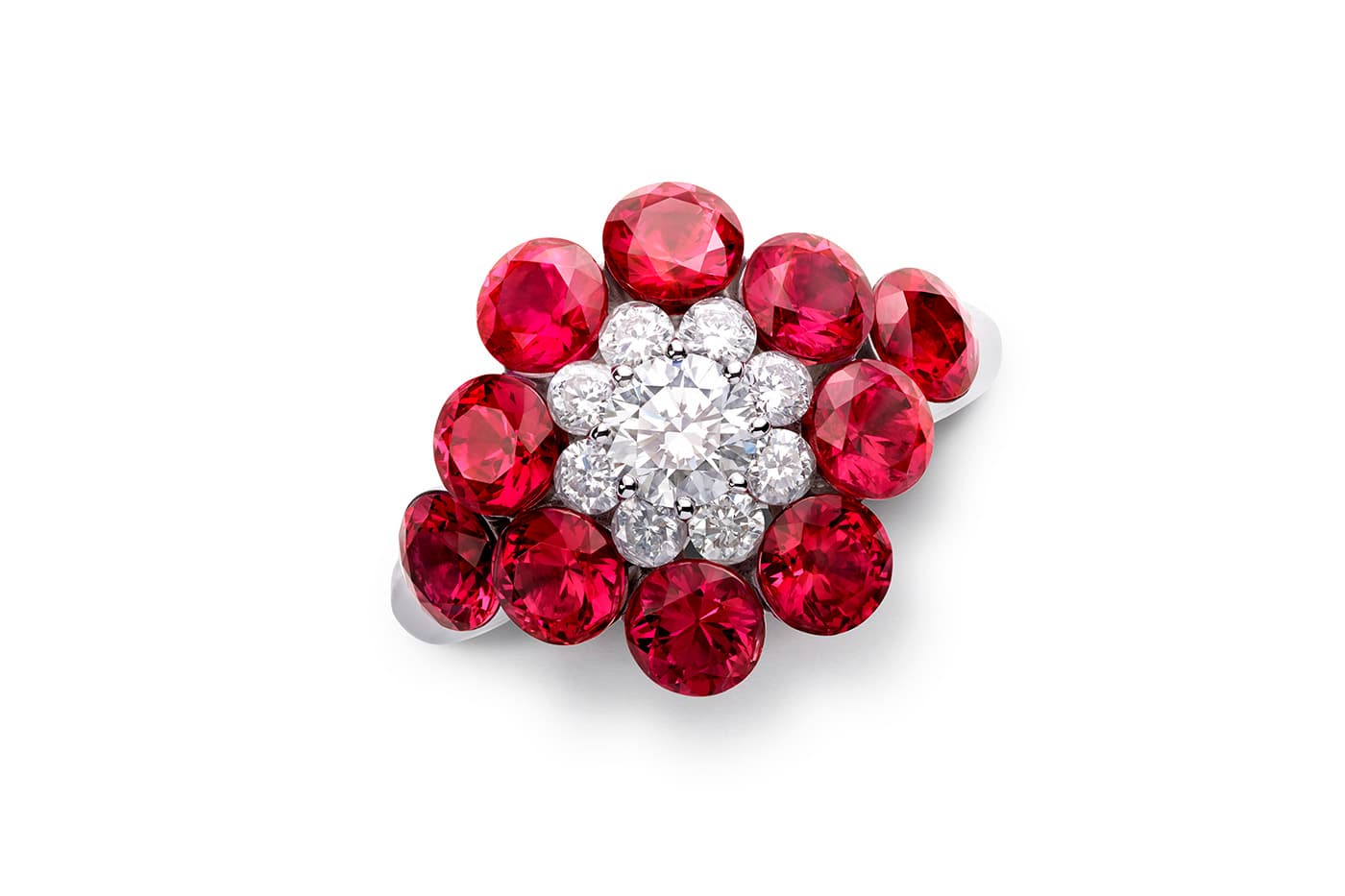
Chopard
Chopard
‘Magical Setting’ collection ring with diamonds and rubies in white gold
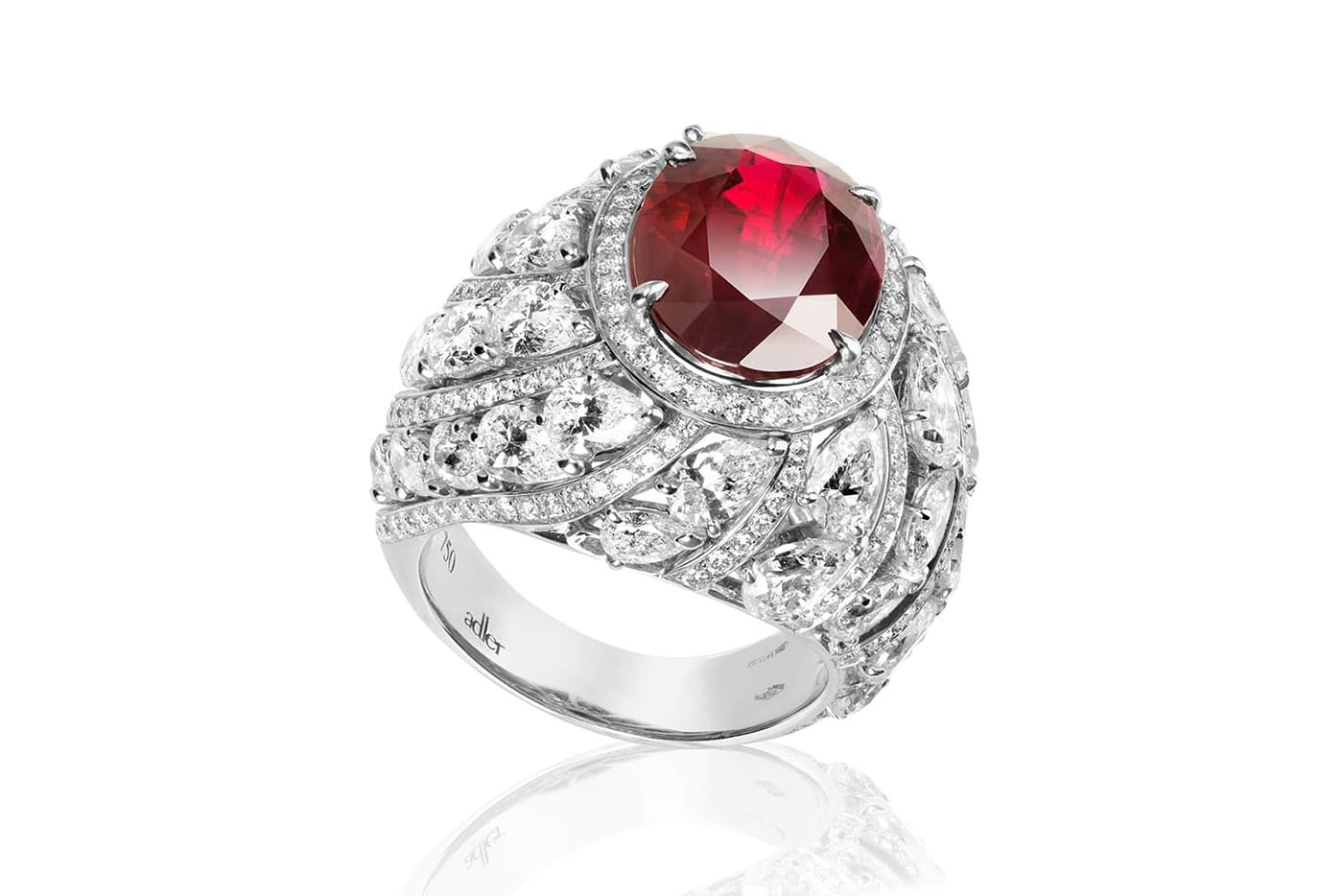
Adler
Adler
‘Palais des Vents’ ring with oval ruby and diamonds in white gold
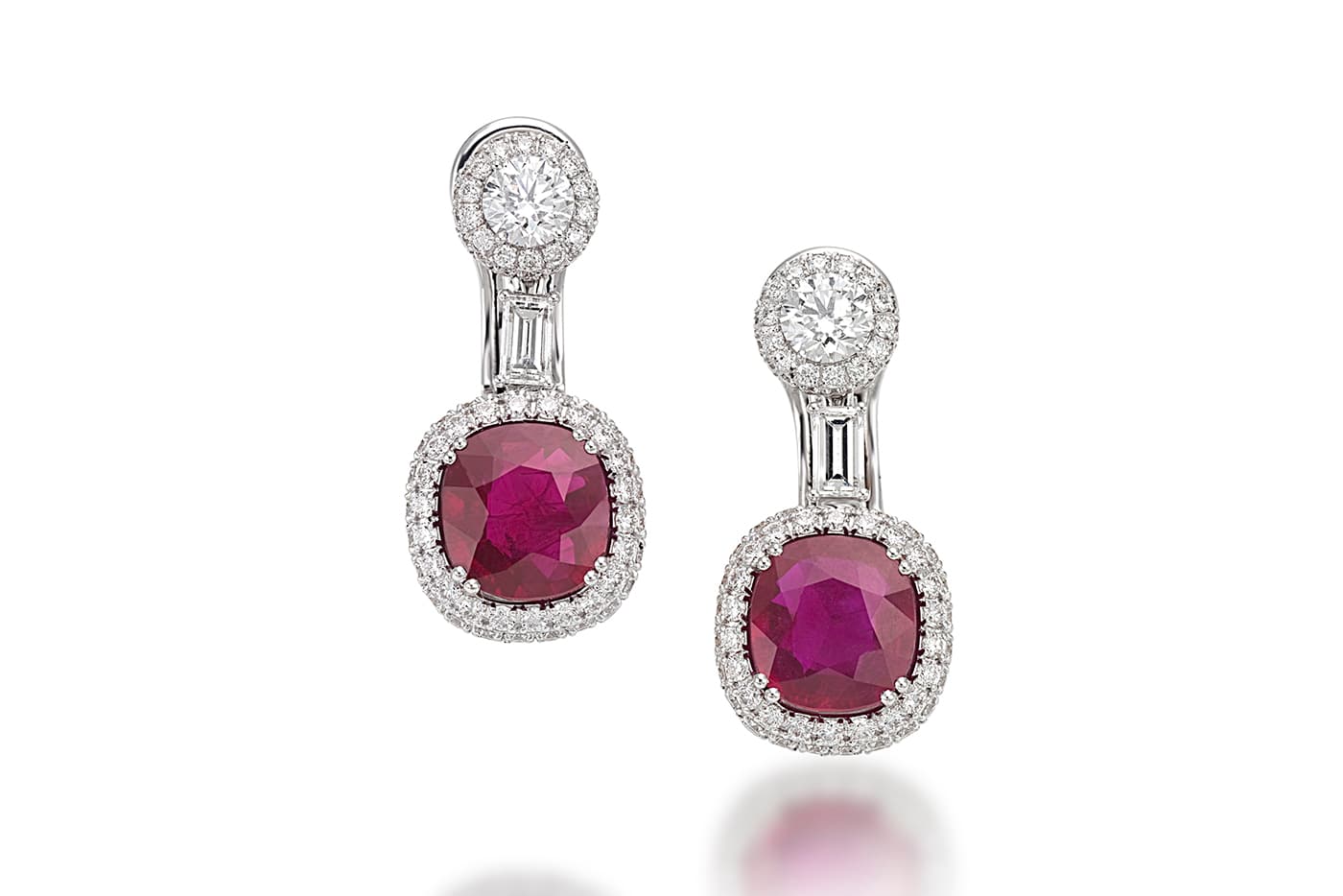
Picchiotti
Picchiotti
‘Special Gem’ earrings with Burmese rubies and diamonds in white gold
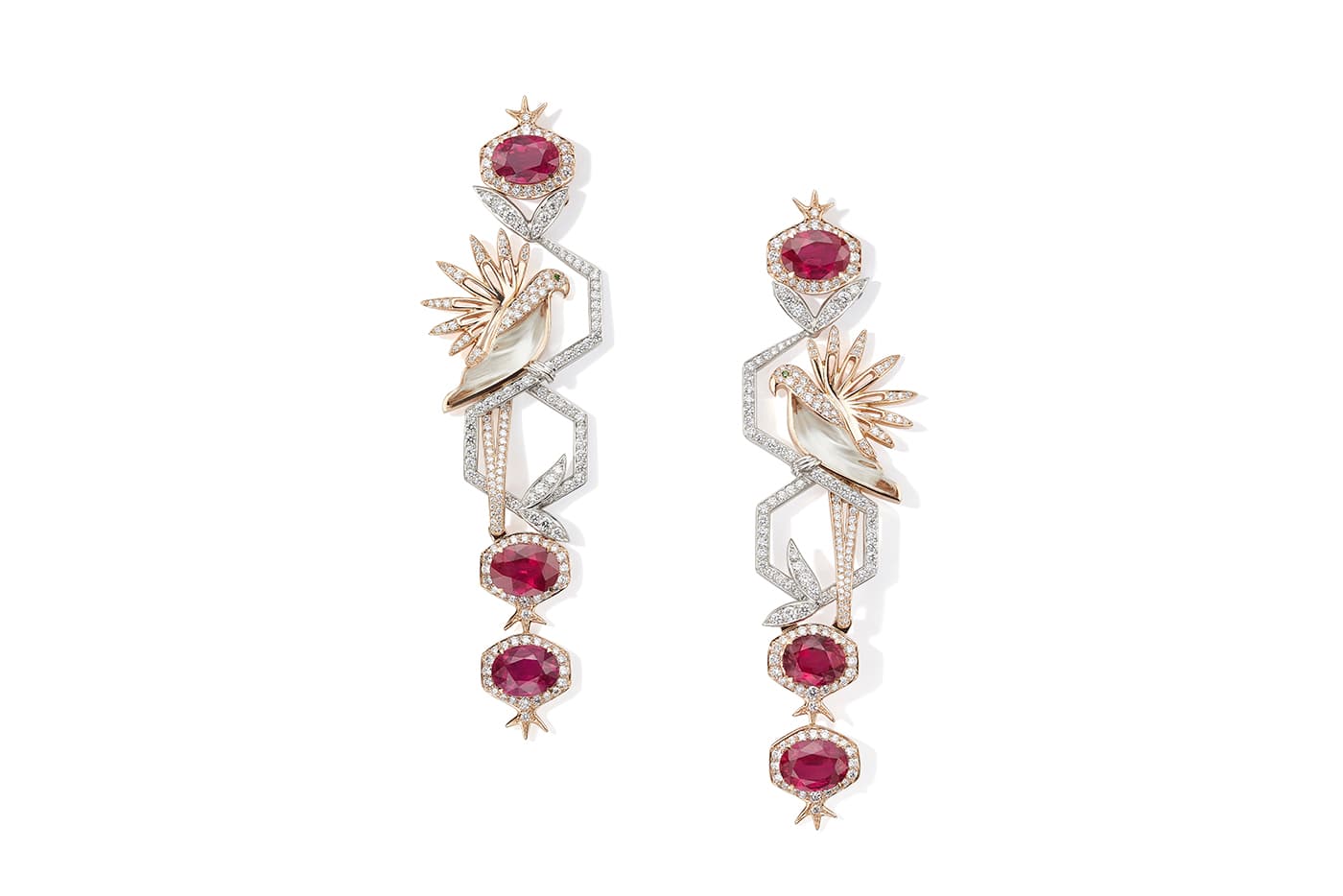
Boodles
Boodles
‘Wonderland – Always a Story’ collection ‘Parakeet & Pomegranate’ earrings with 12.92ct rubies, diamonds and rock crystal in platinum and rose gold
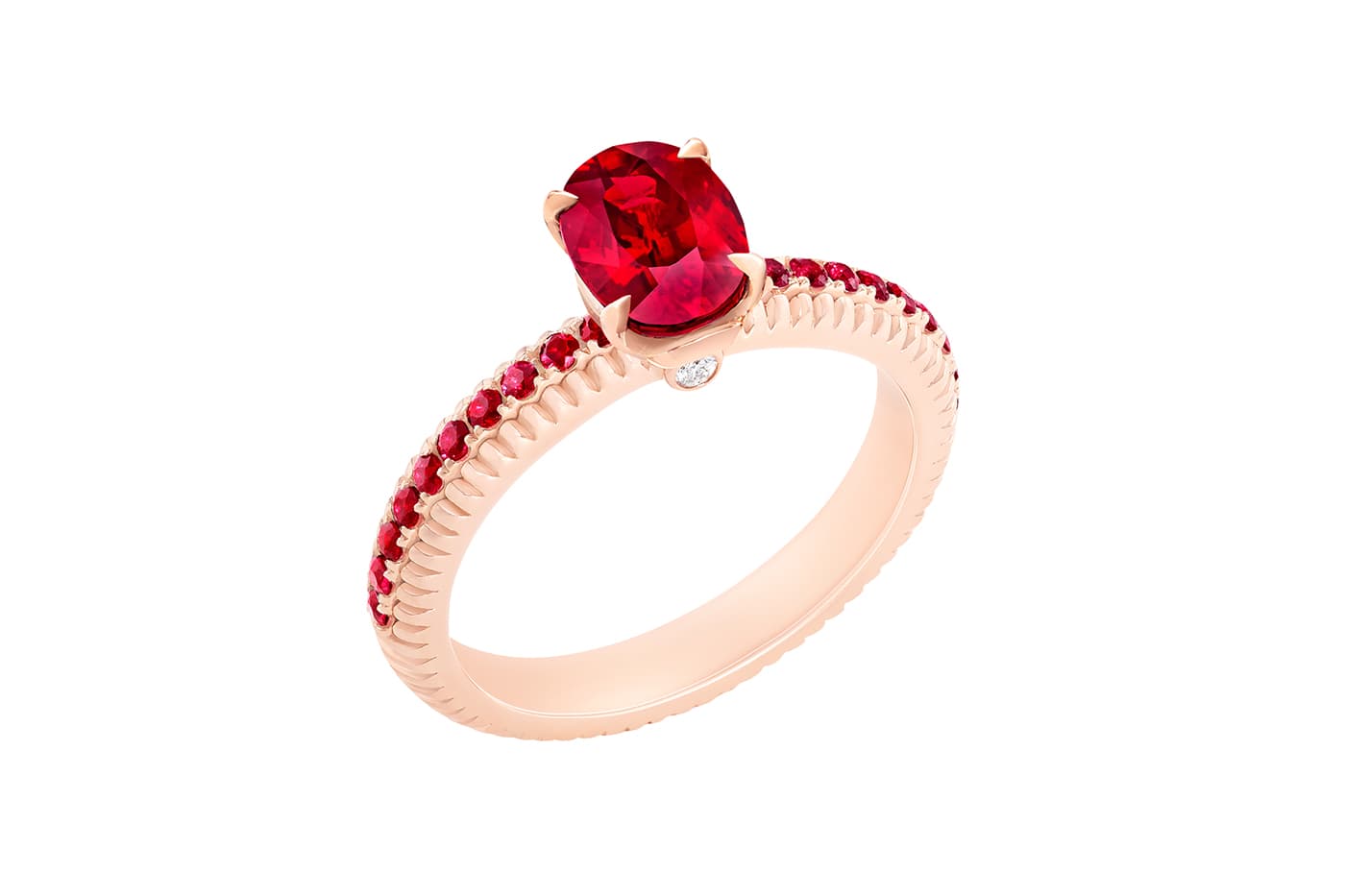
Fabergé
Fabergé
‘Three Colours of Love’ ring with 2.30ct ruby and accenting rubies and diamond in rose gold
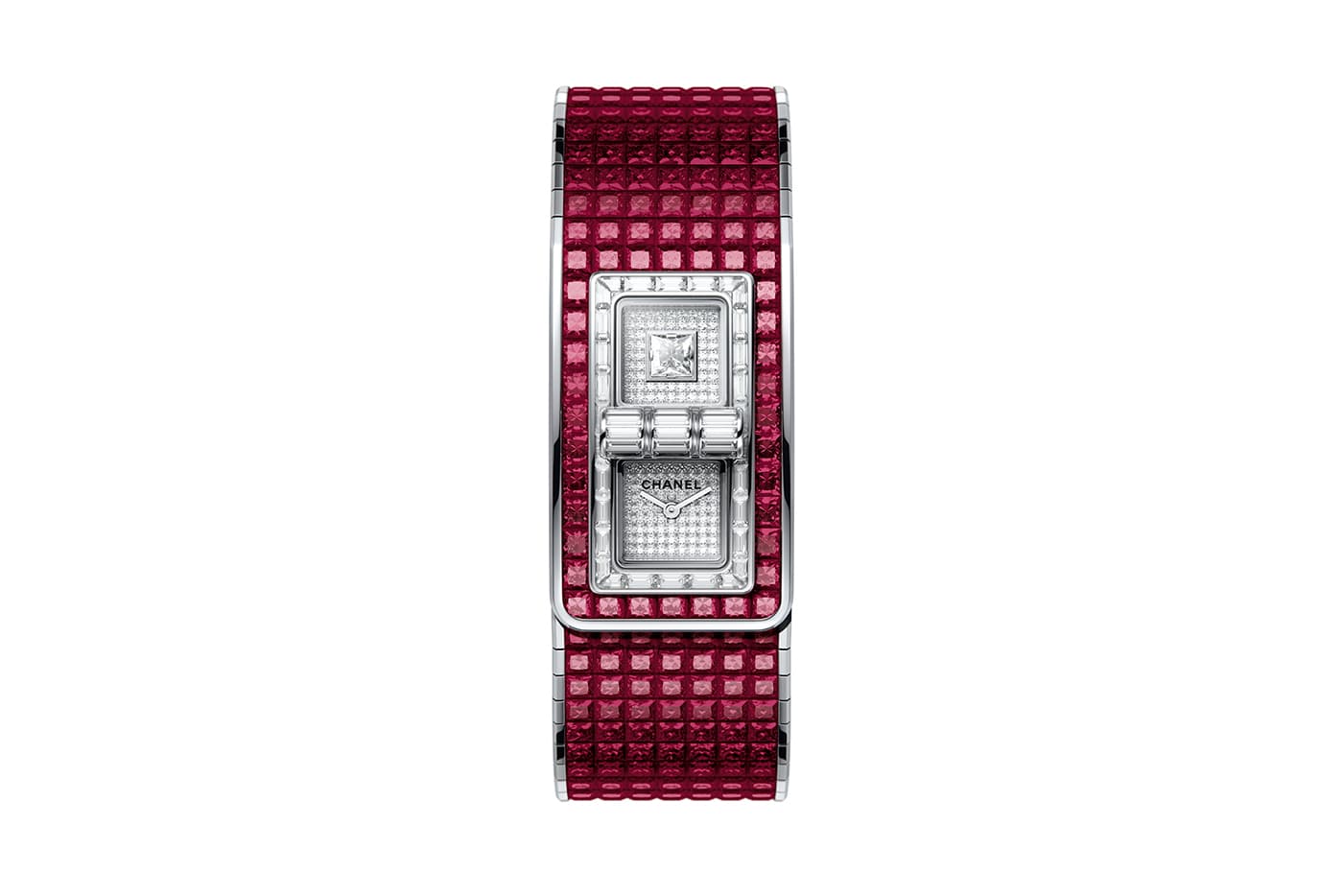
Chanel
Chanel
‘Code Coco’ collection watch with 62.81ct rubies and diamonds in white gold
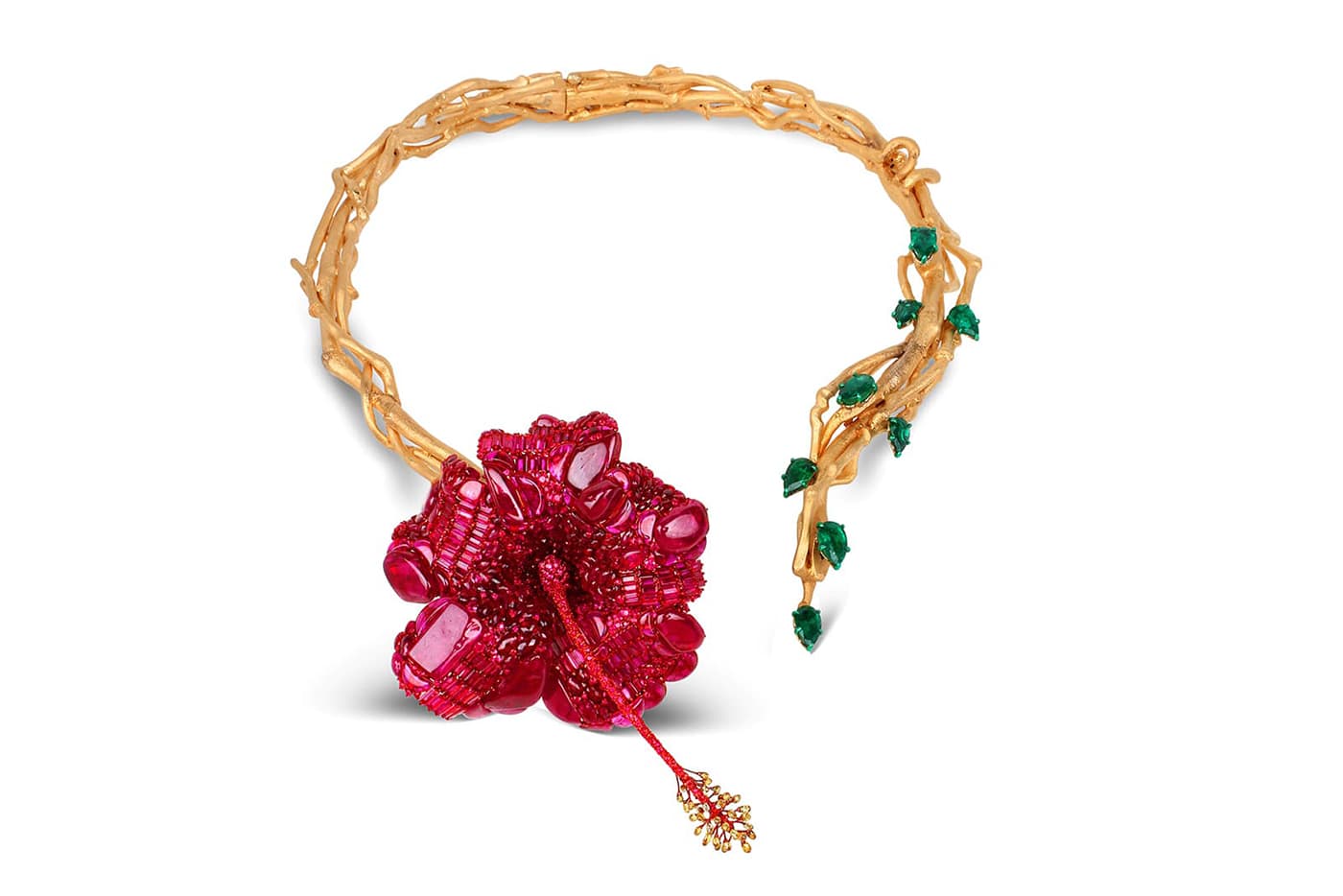
Bina Goenka
Bina Goenka
‘Hibiscus’ necklace with rubies and emeralds in yellow gold
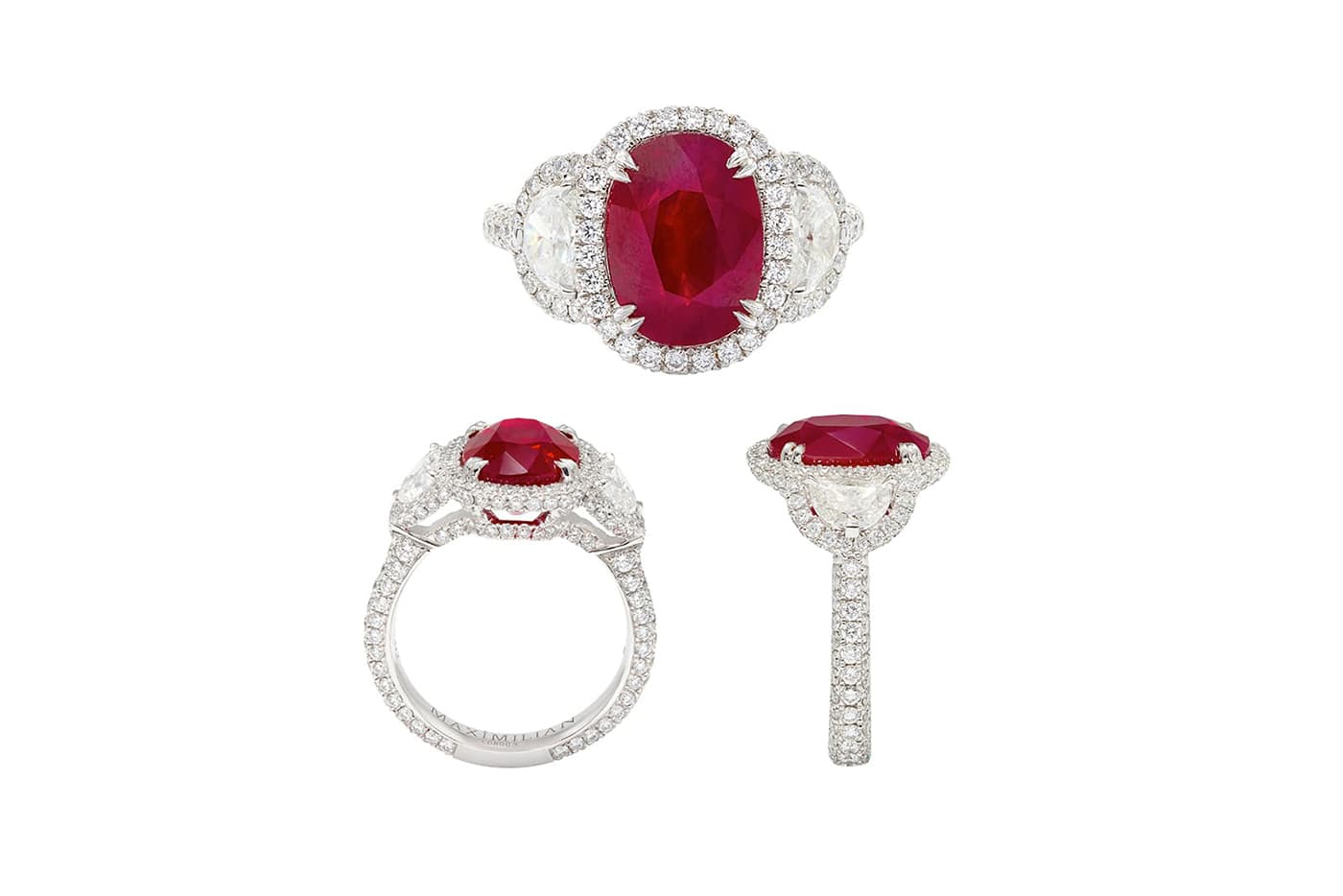
Maximilian
Maximilian
Ring with Burmese pigeon’s blood ruby and diamonds in white gold
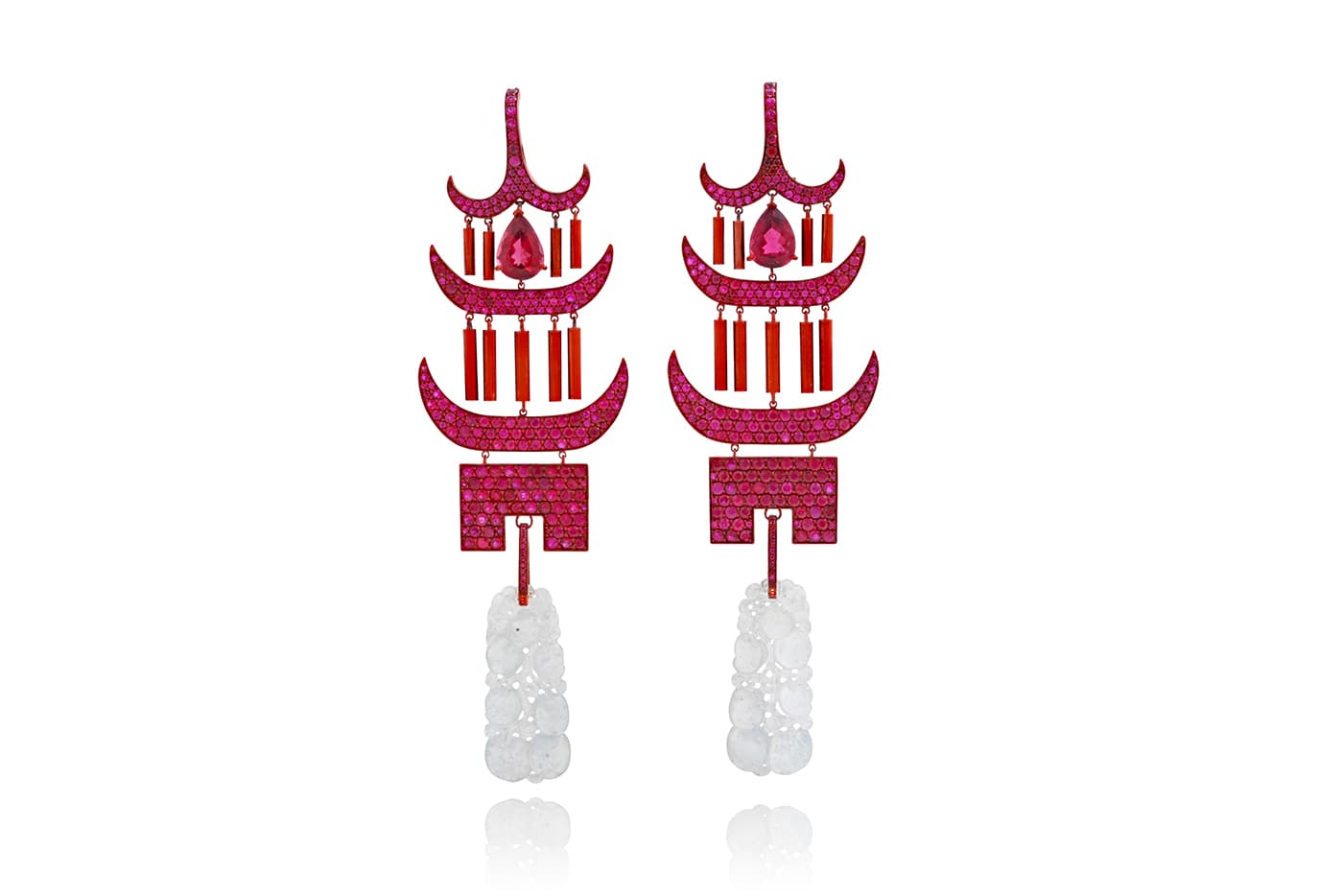
Lydia Courteille
Lydia Courteille
‘Scarlett Empress’ collection earrings with rubies and white jade in titanium
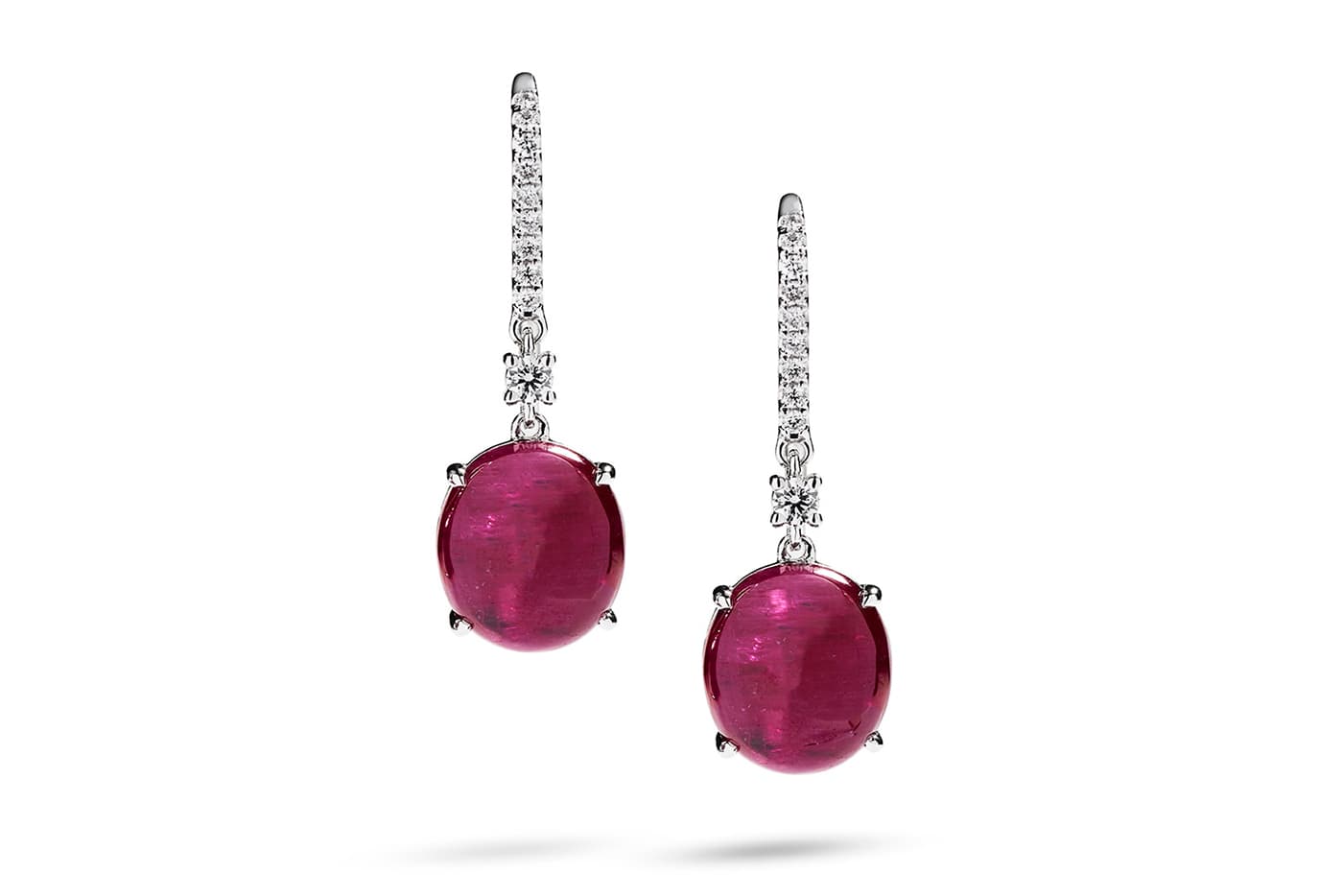
Hartmann's
Hartmann's
Earrings with Greenland ruby and diamonds in white gold
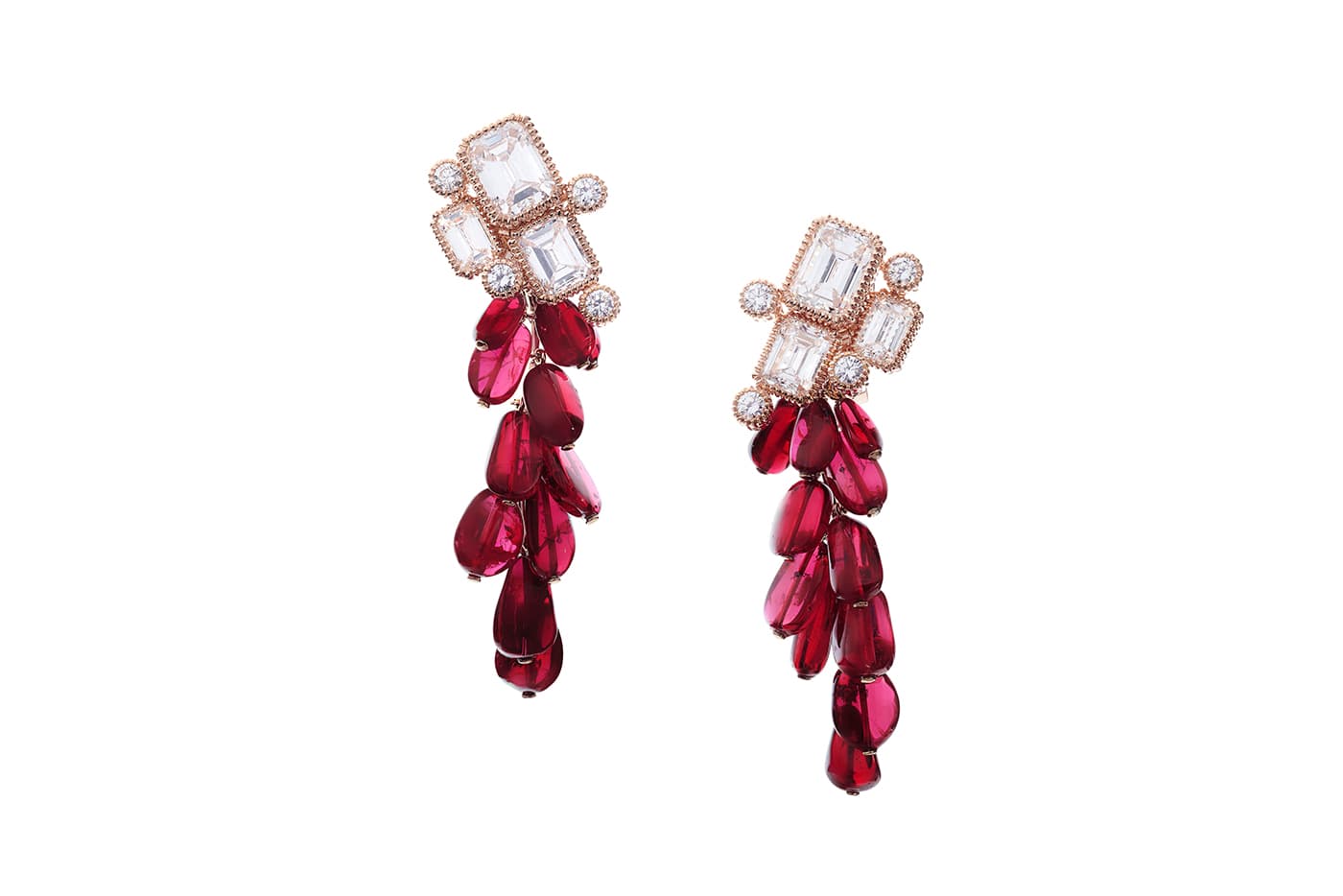
REZA
REZA
‘Grappes’ earrings with rubies and diamonds in yellow gold
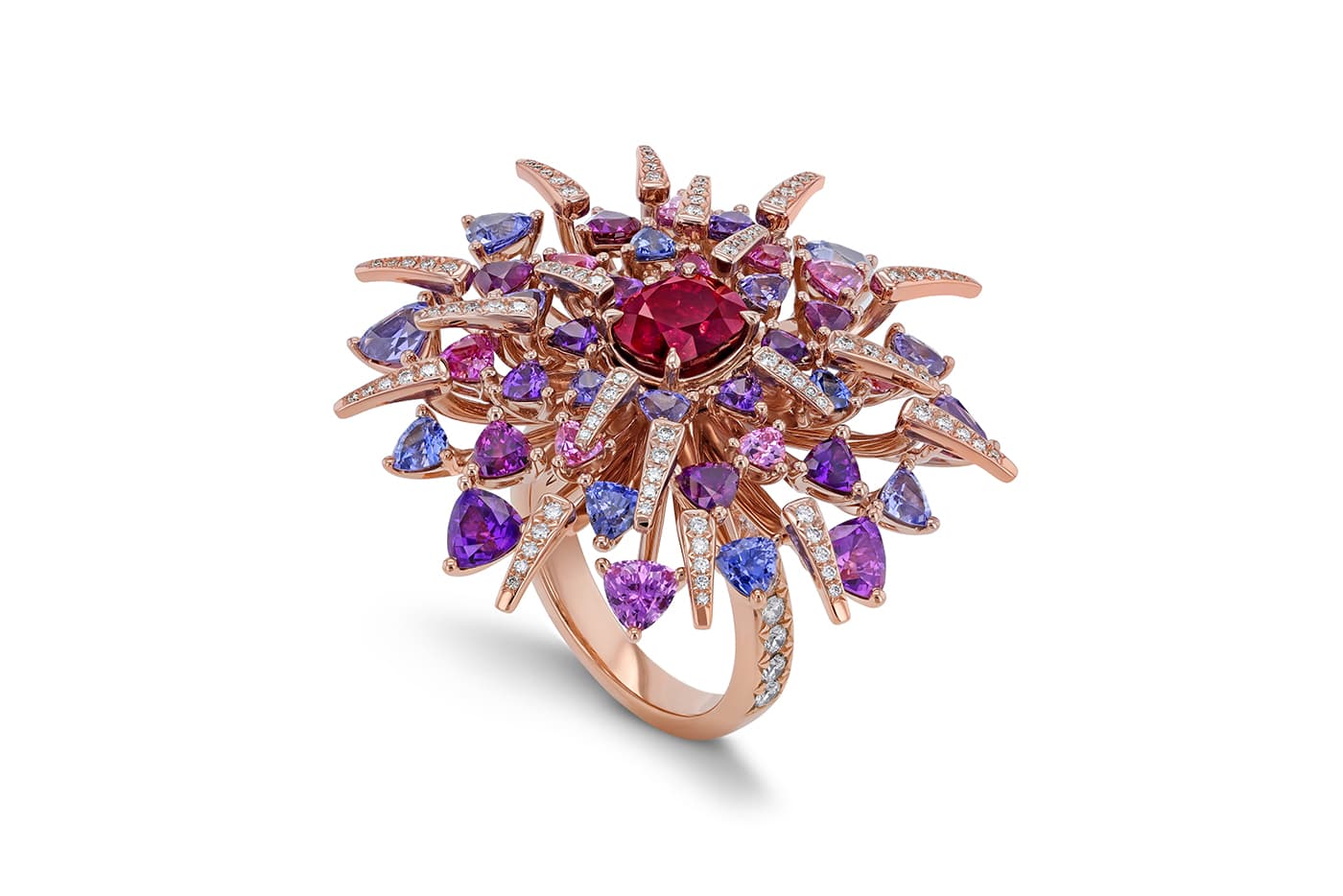
Gübelin
Gübelin
‘Red Dahlia’ ring with oval cut 2.18ct Burmese ruby, trillion cut sapphires and brilliant cut diamonds in rose gold
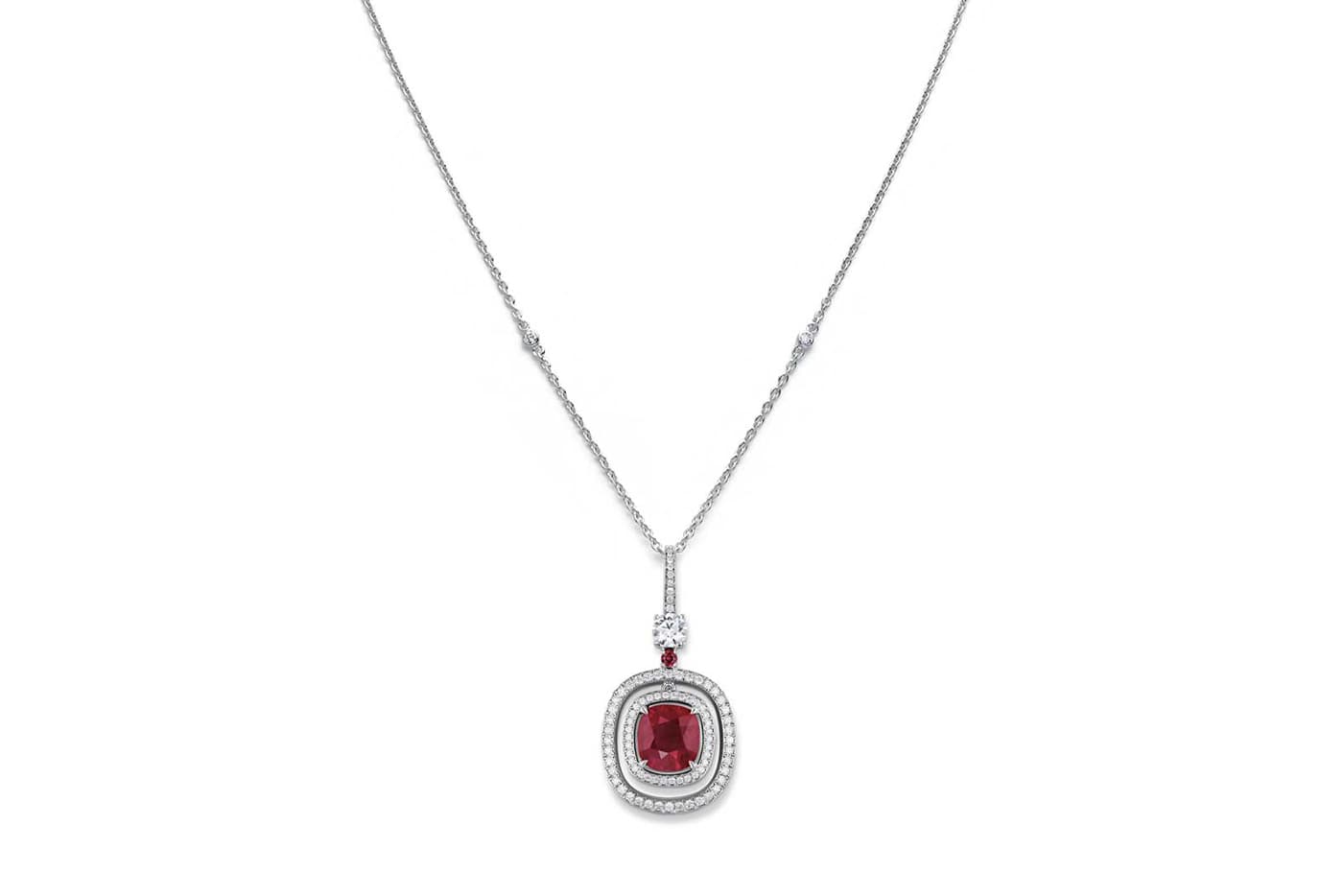
Gübelin
Gübelin
‘Glowing Ember’ necklace with 3.54ct Burmese ruby, accenting ruby and diamonds in white gold
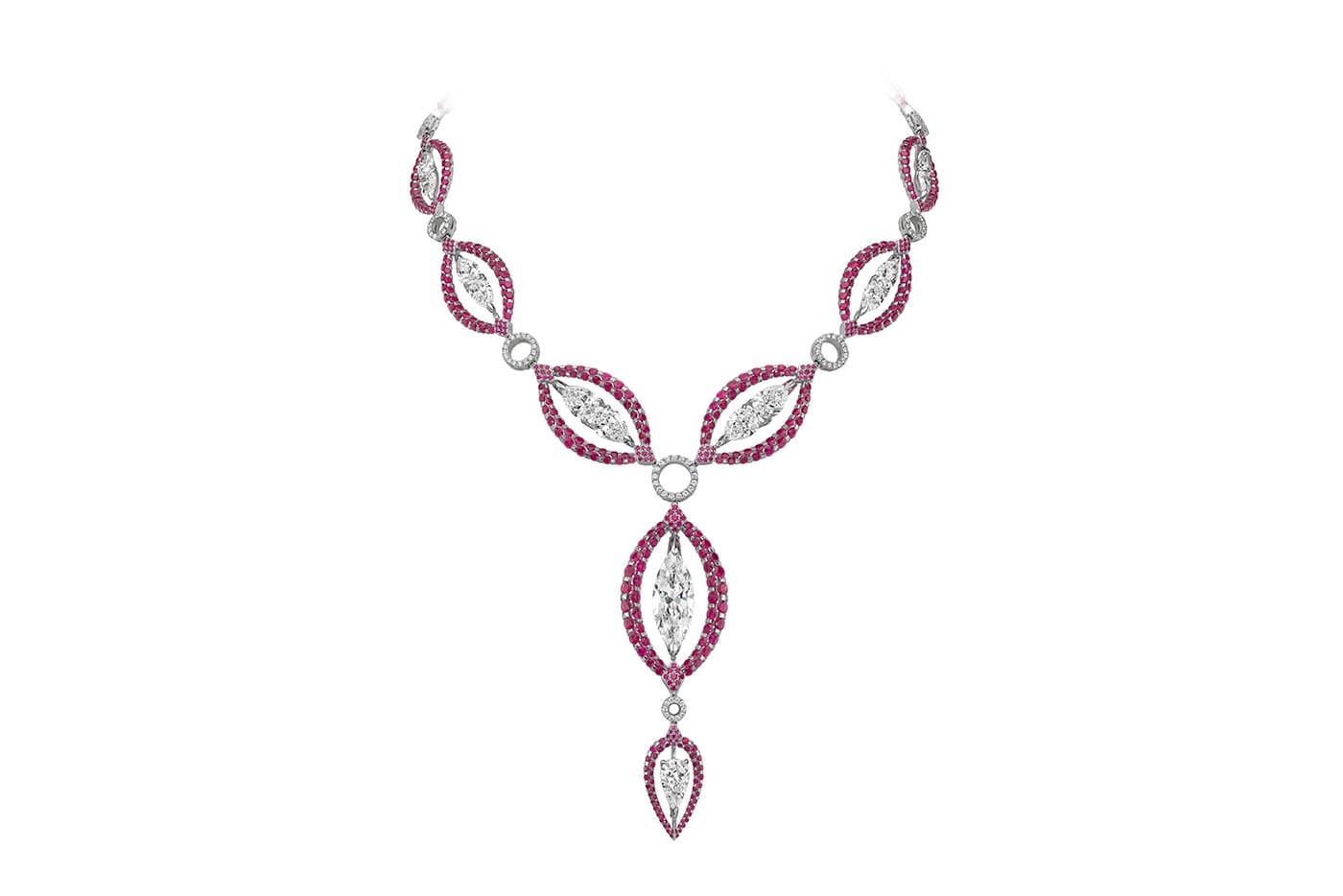
Boghossian
Boghossian
‘Les Merveilles’ reversible necklace with 24.94ct rubies and diamonds in white gold
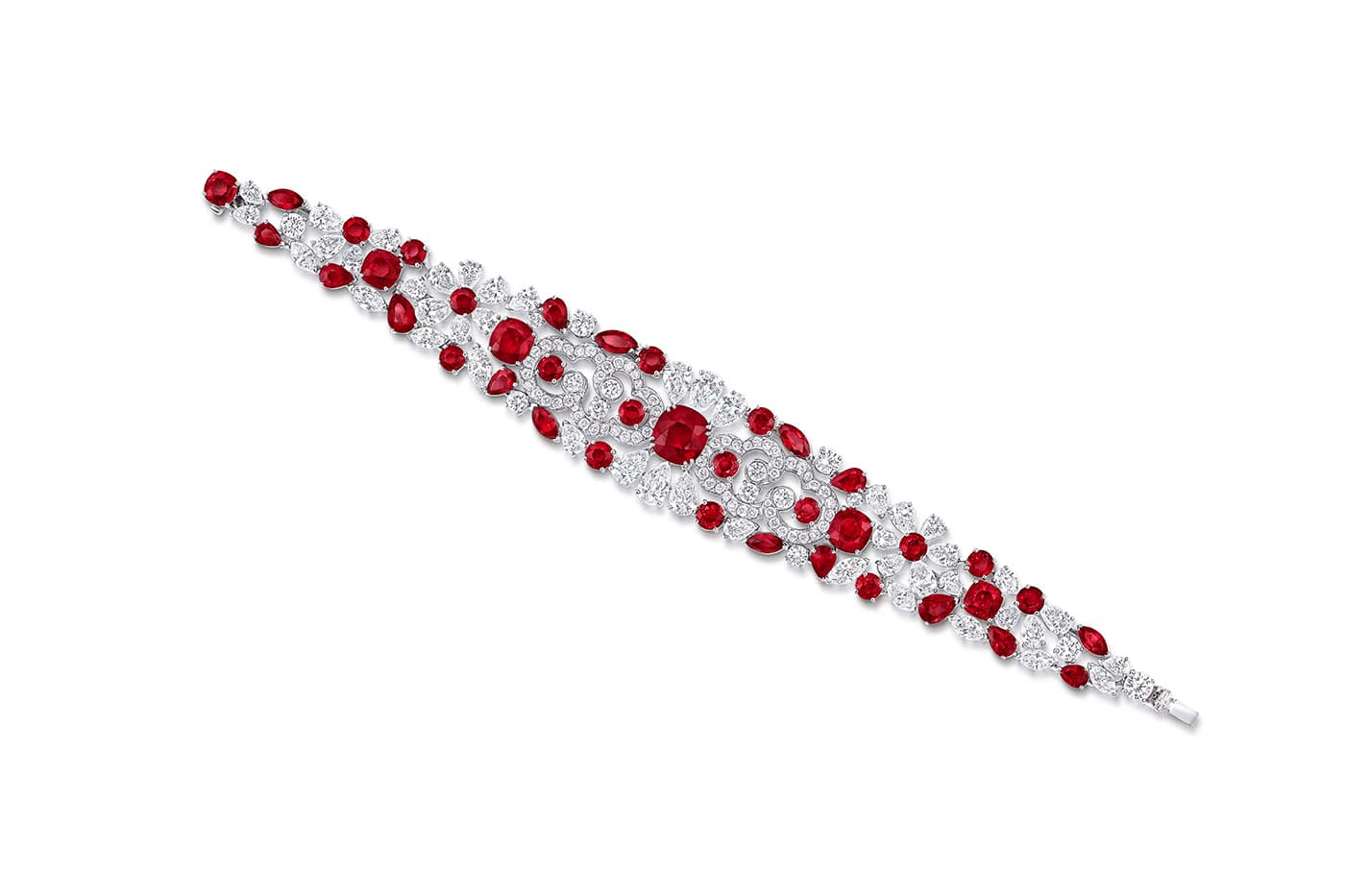
Graff
Graff
‘Nuage’ bracelet with 5.04ct central Burmese rubies, 31.19ct accenting rubies and diamonds in white gold
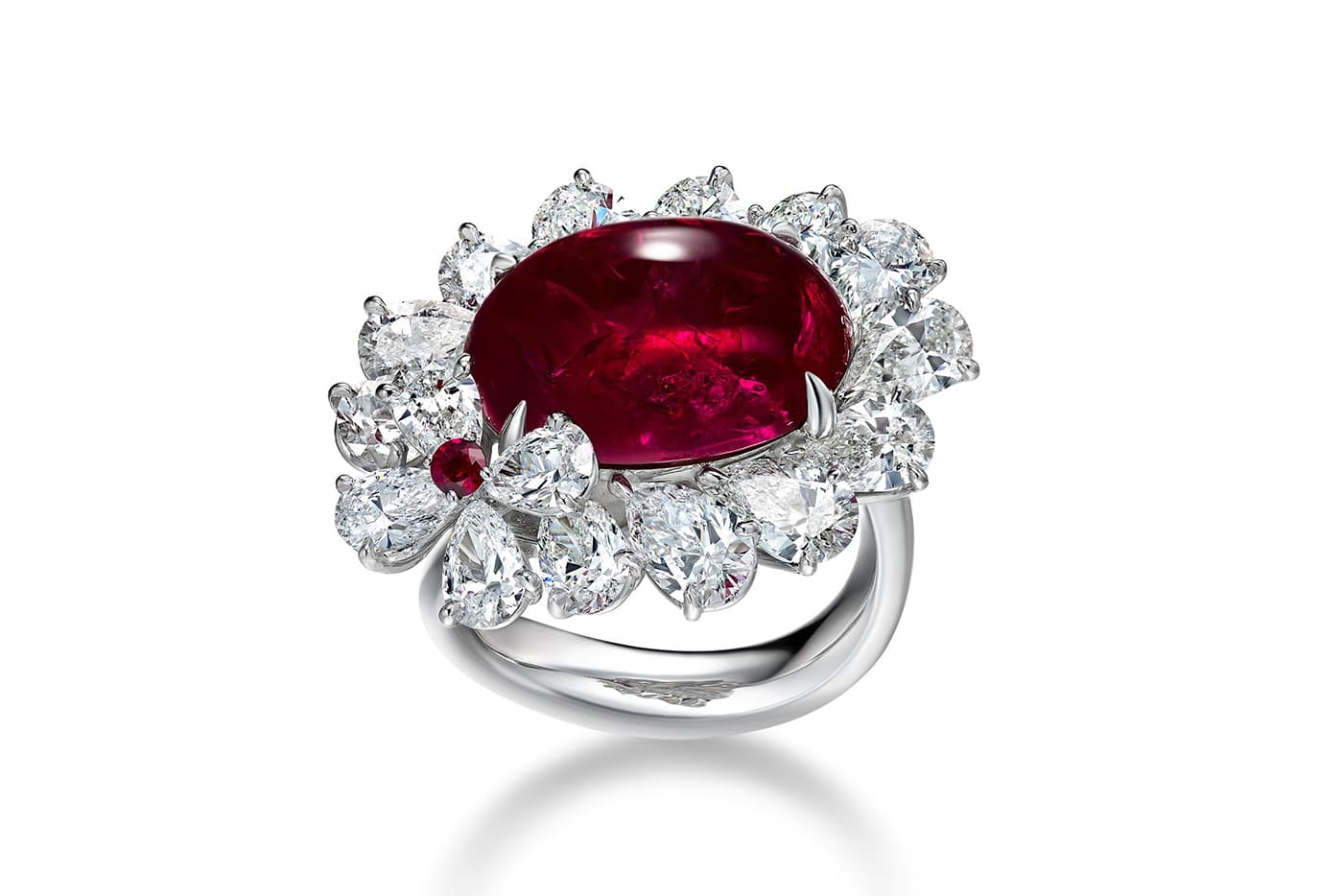
Faidee
Faidee
Ring with Burmese pigeon’s blood ruby and diamonds in white gold
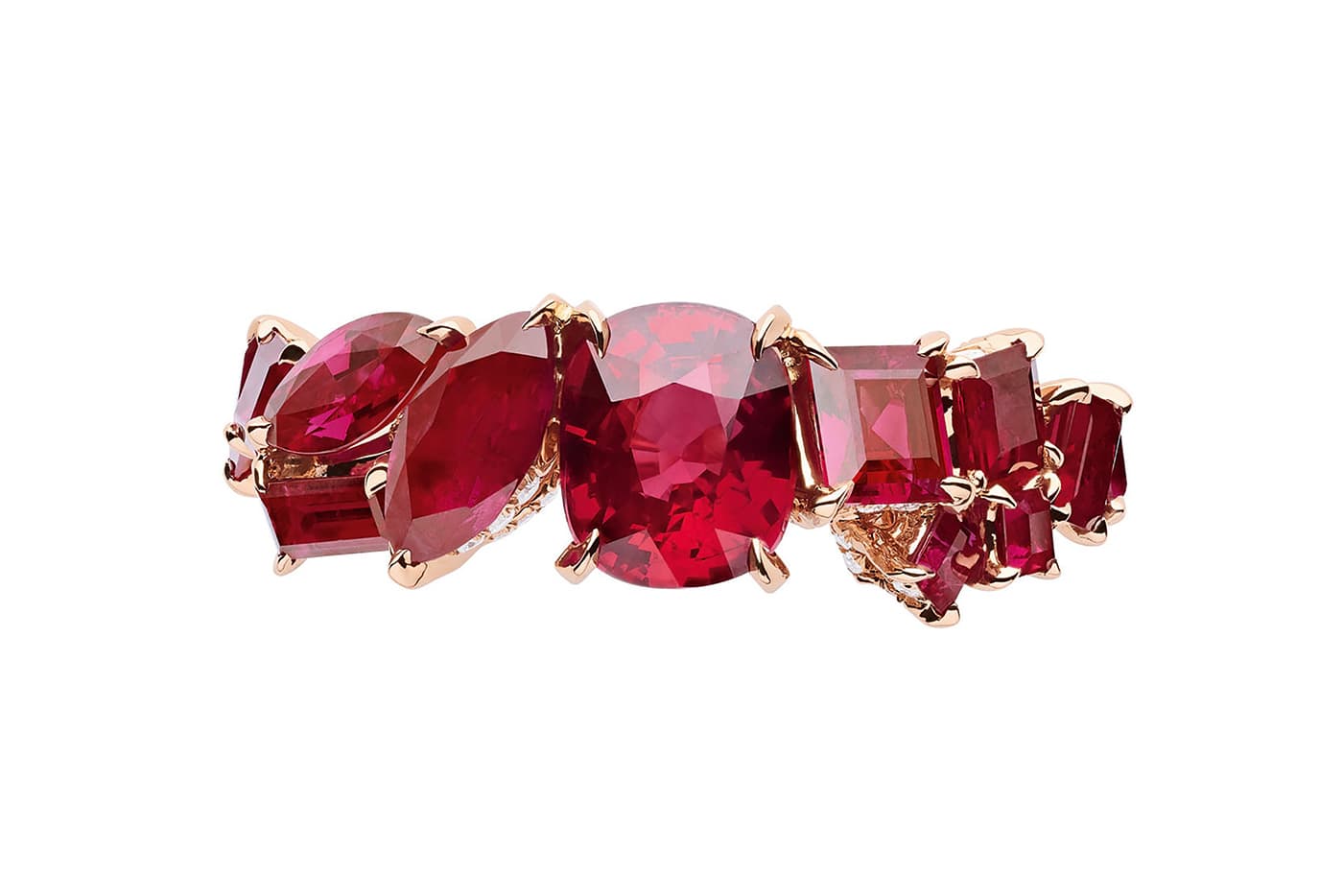
Dior
Dior
‘Gem Dior’ ring with rubies in yellow gold
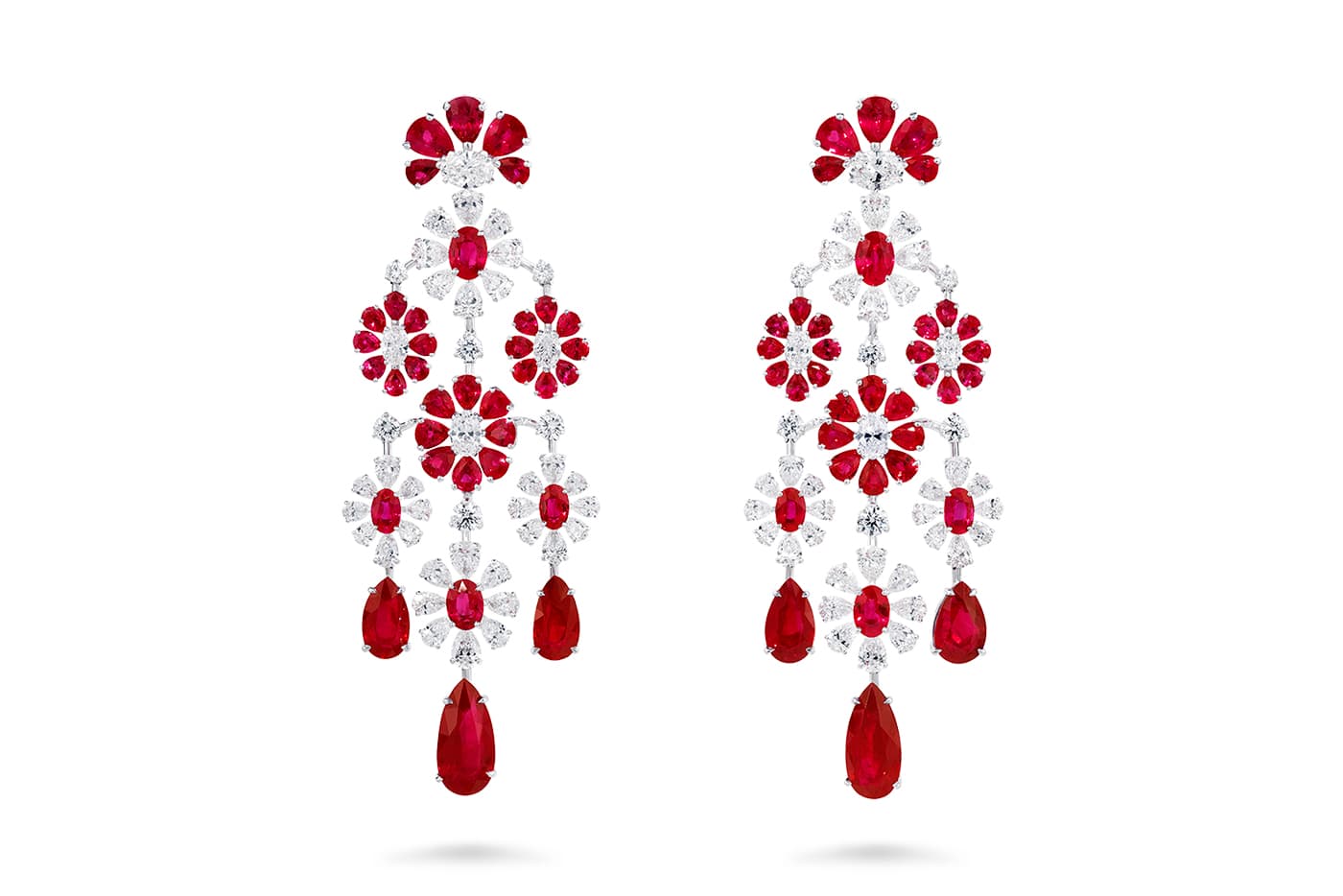
David Morris
David Morris
Chandelier earrings with rubies and diamonds in white gold
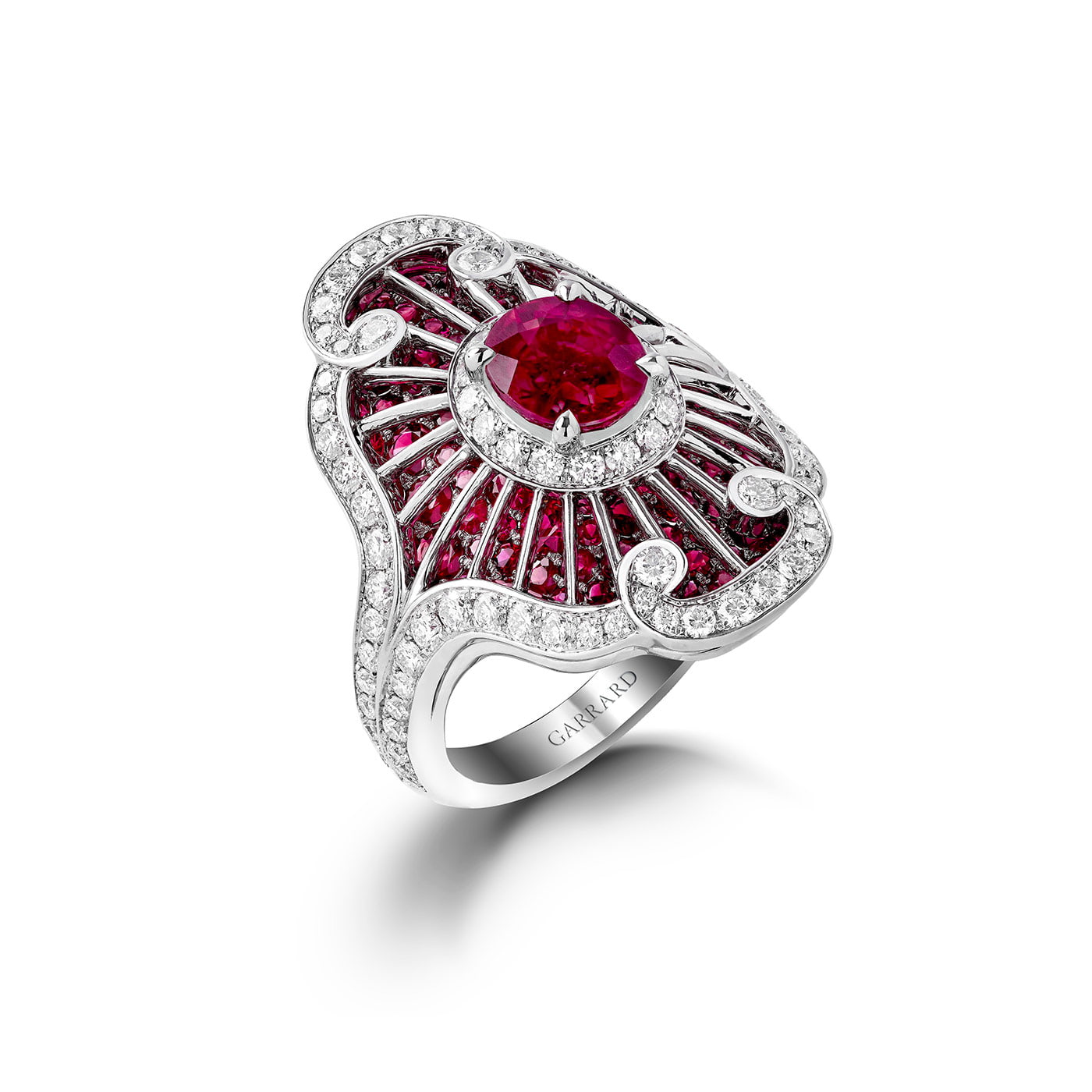
Garrard
Garrard
‘Jewelled Vault’ ring with total of 4.55ct rubies and diamonds in white gold
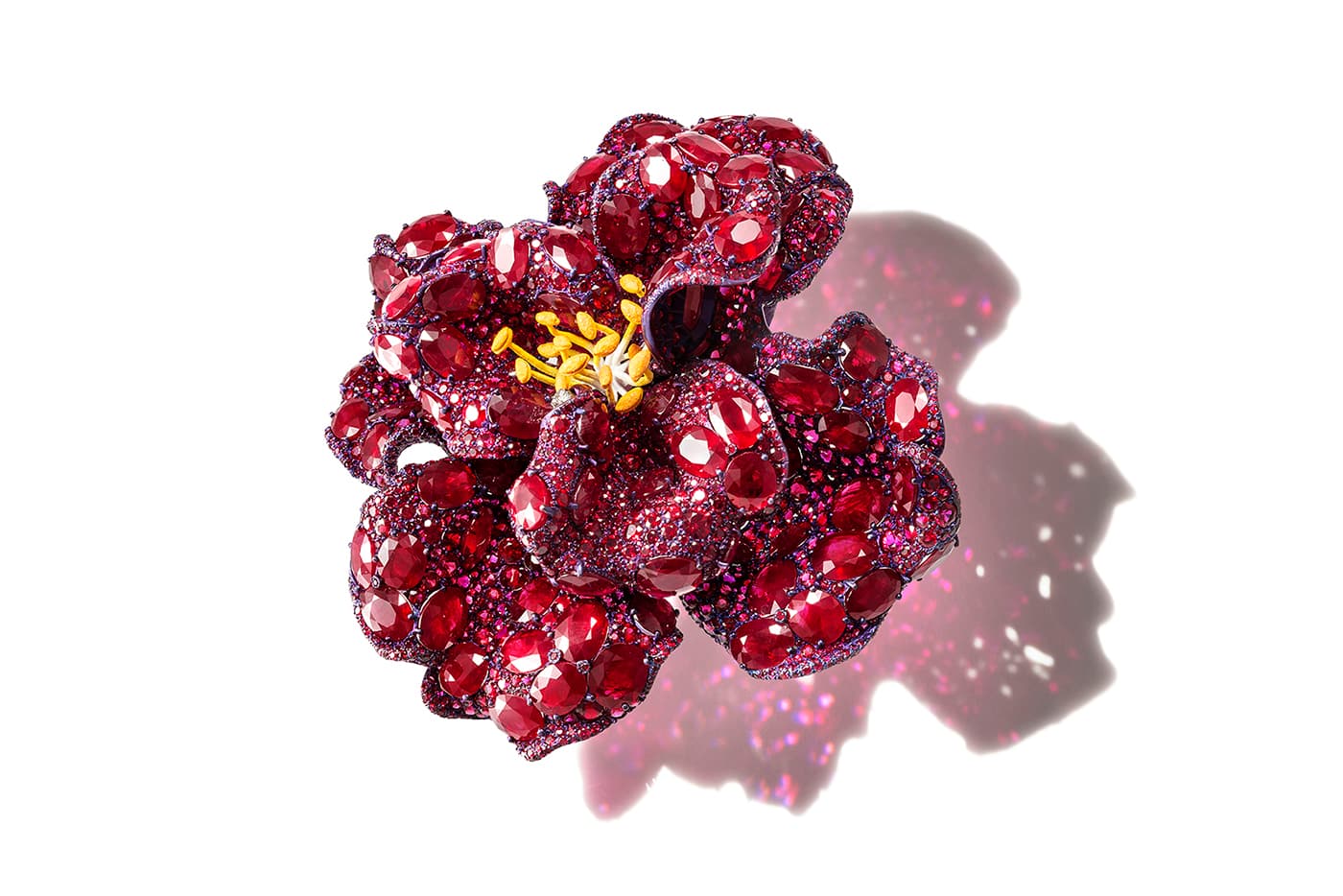
Cindy Chao
Cindy Chao
‘Peony’ brooch with 2,458 rubies totalling appox. 230ct in titanium
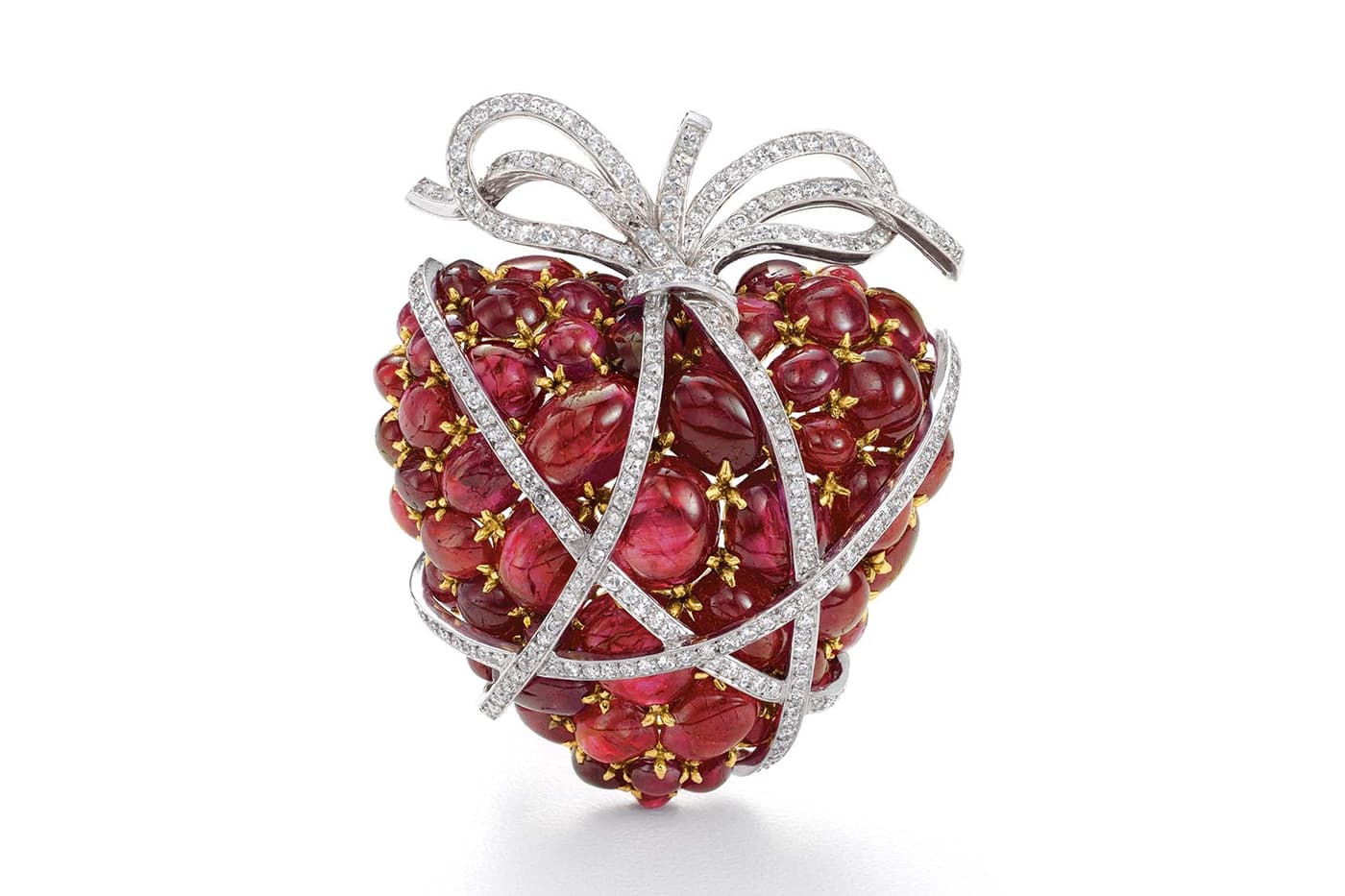
Verdura
Verdura
‘Wrapped Heart’ brooch with cabochon rubies and diamonds in yellow gold and platinum
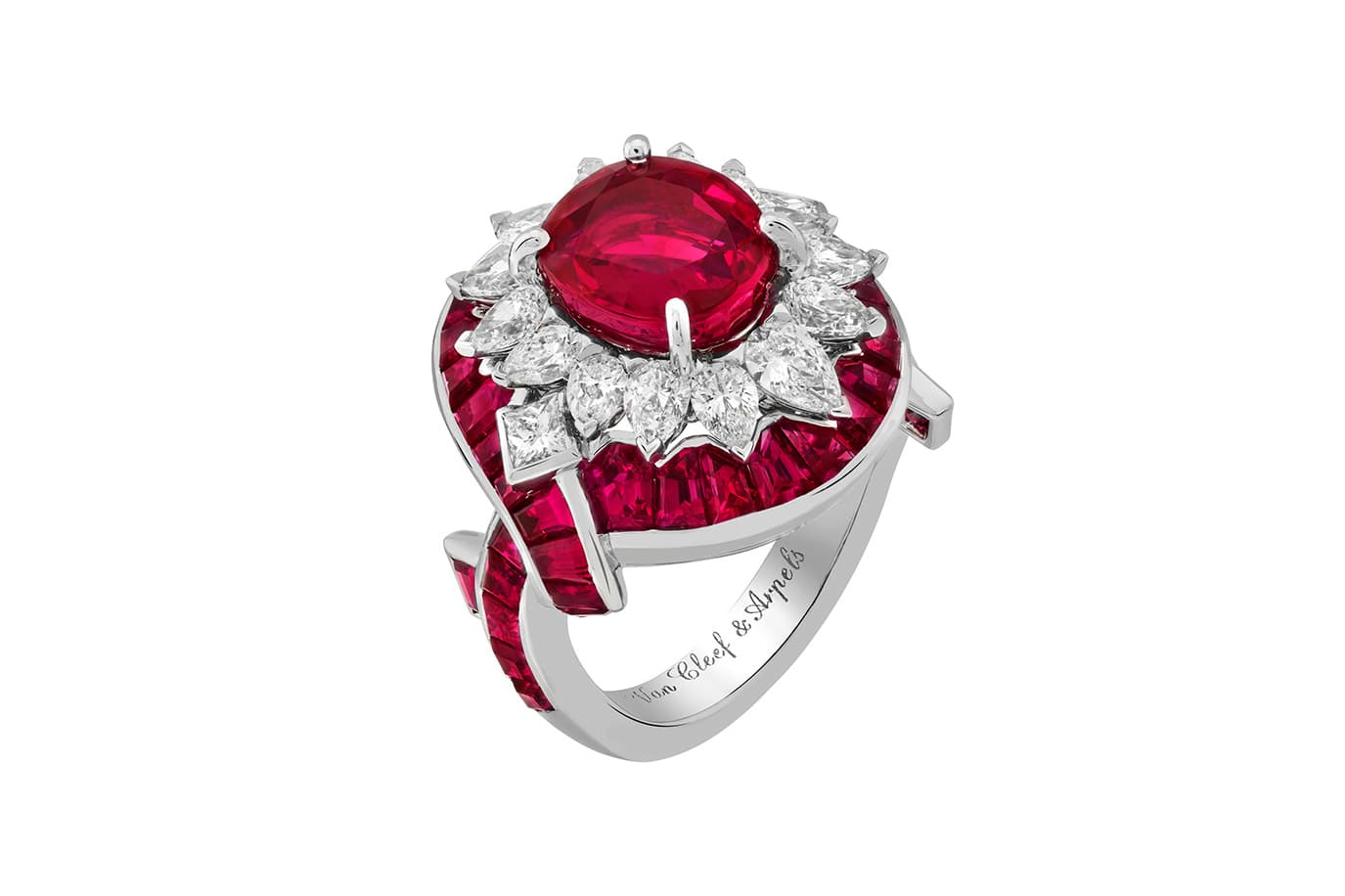
Van Cleef&Arpels
Van Cleef&Arpels
‘Romeo and Juliet’ collection ‘Filtro d’Amore’ ring with 3.89ct central ruby, accenting rubies and diamonds in white gold
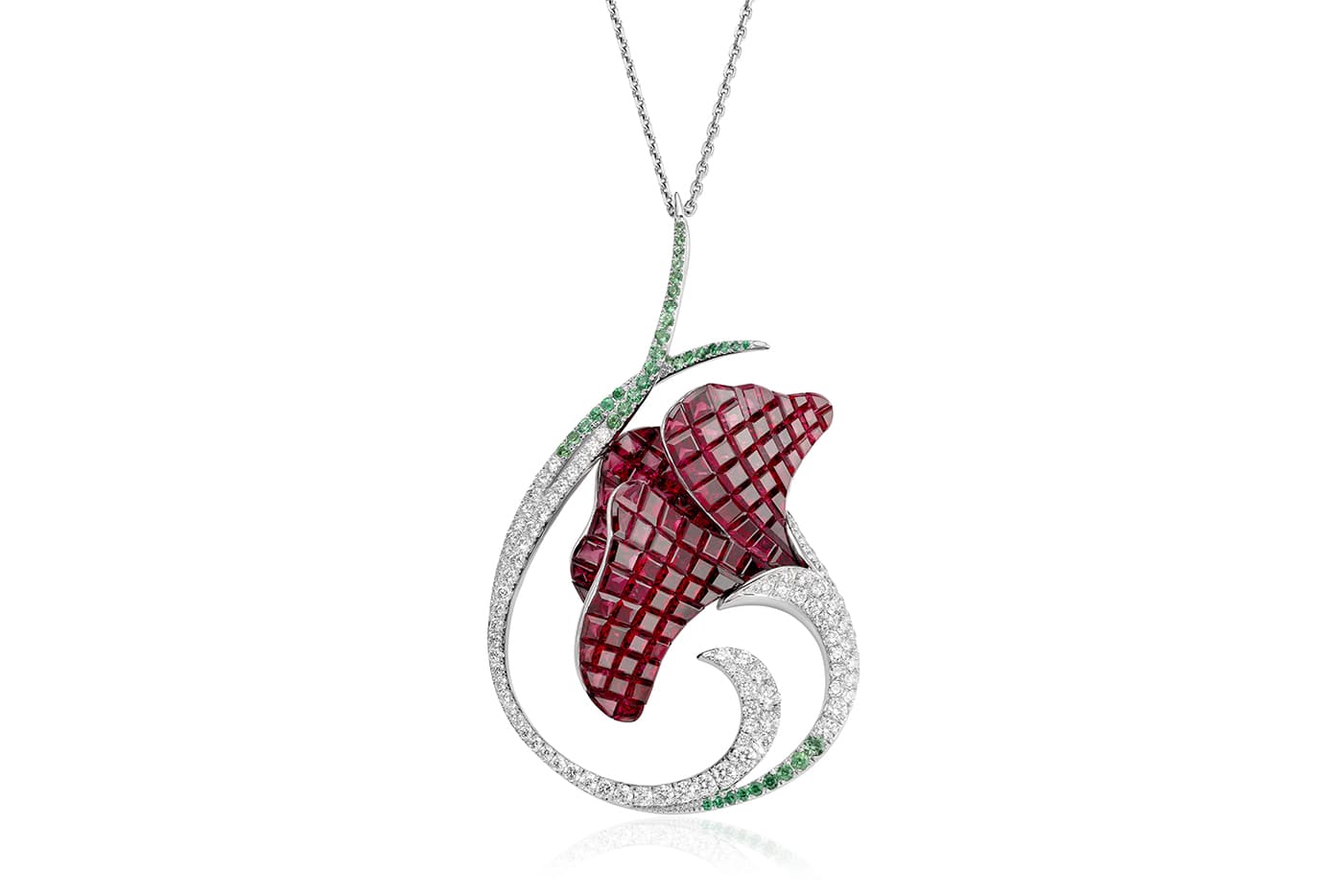
Stenzhorn
Stenzhorn
‘Floral’ collection pendant with rubies, diamonds and emeralds in white gold
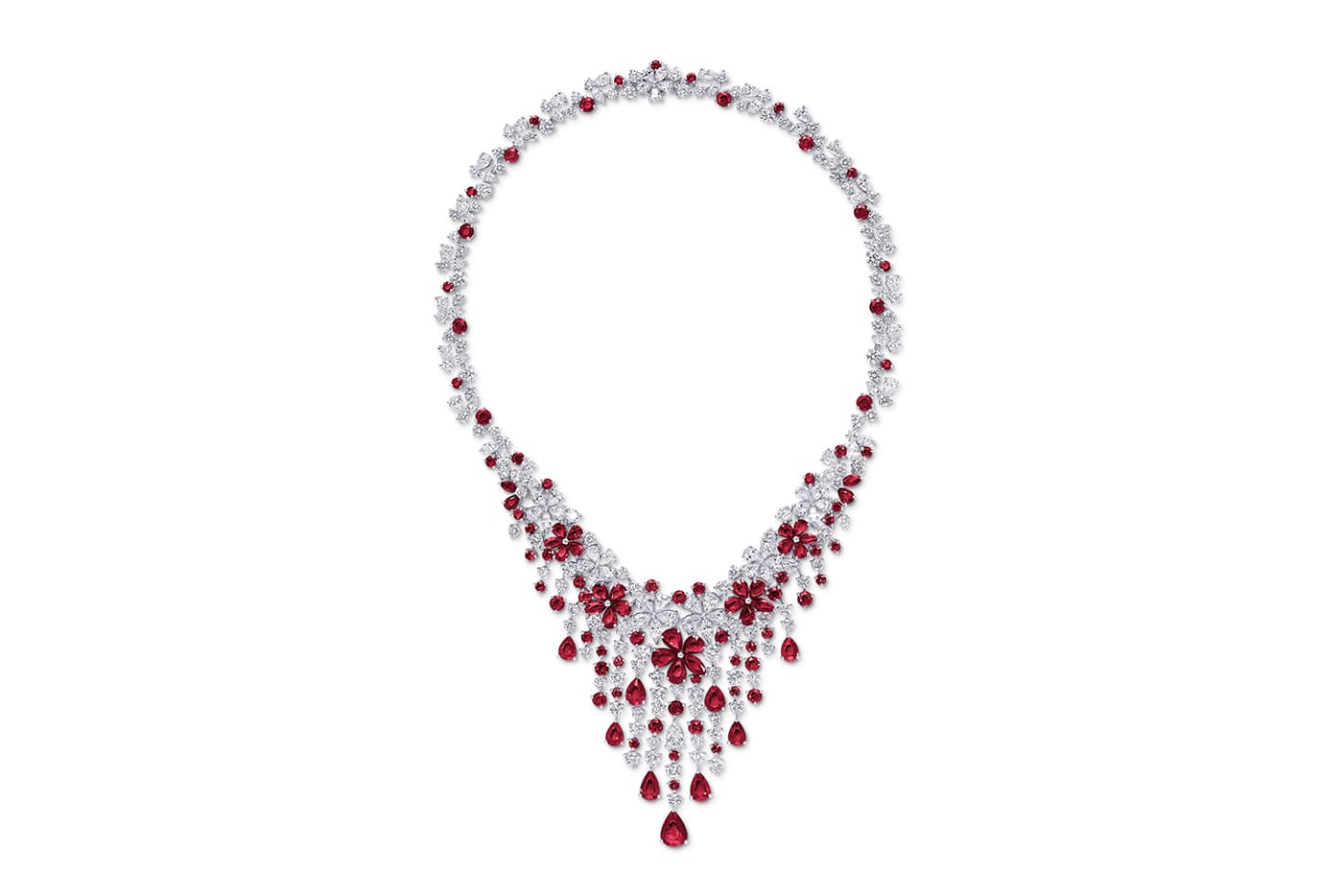
Graff
Graff
‘Carissa’ necklace with rubies and diamonds in white gold
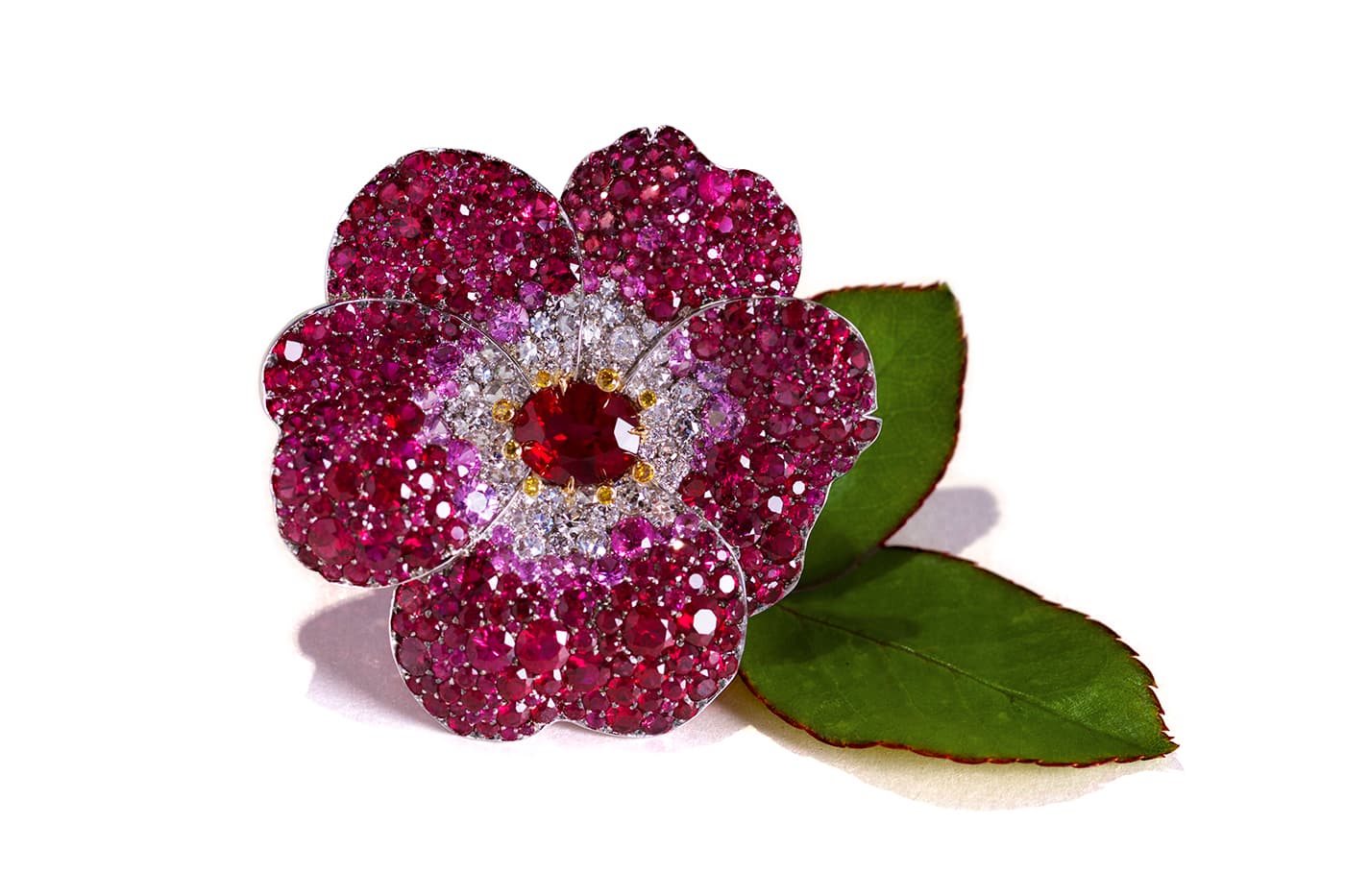
David Michael
David Michael
‘Ruby rose’ ring with rubies and diamonds in platinum
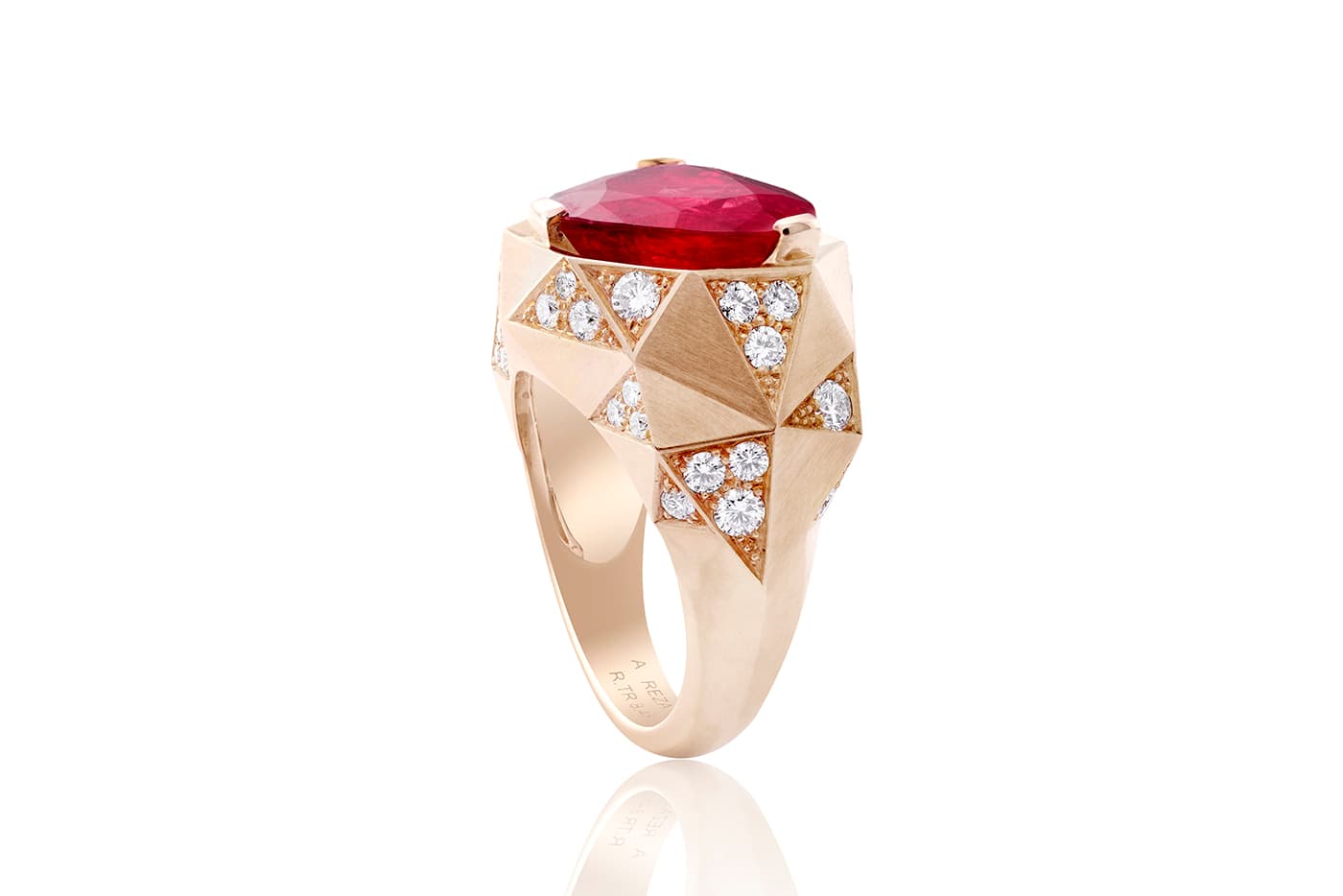
REZA
REZA
‘La Chose Troidia’ ring with ruby and diamonds in yellow gold
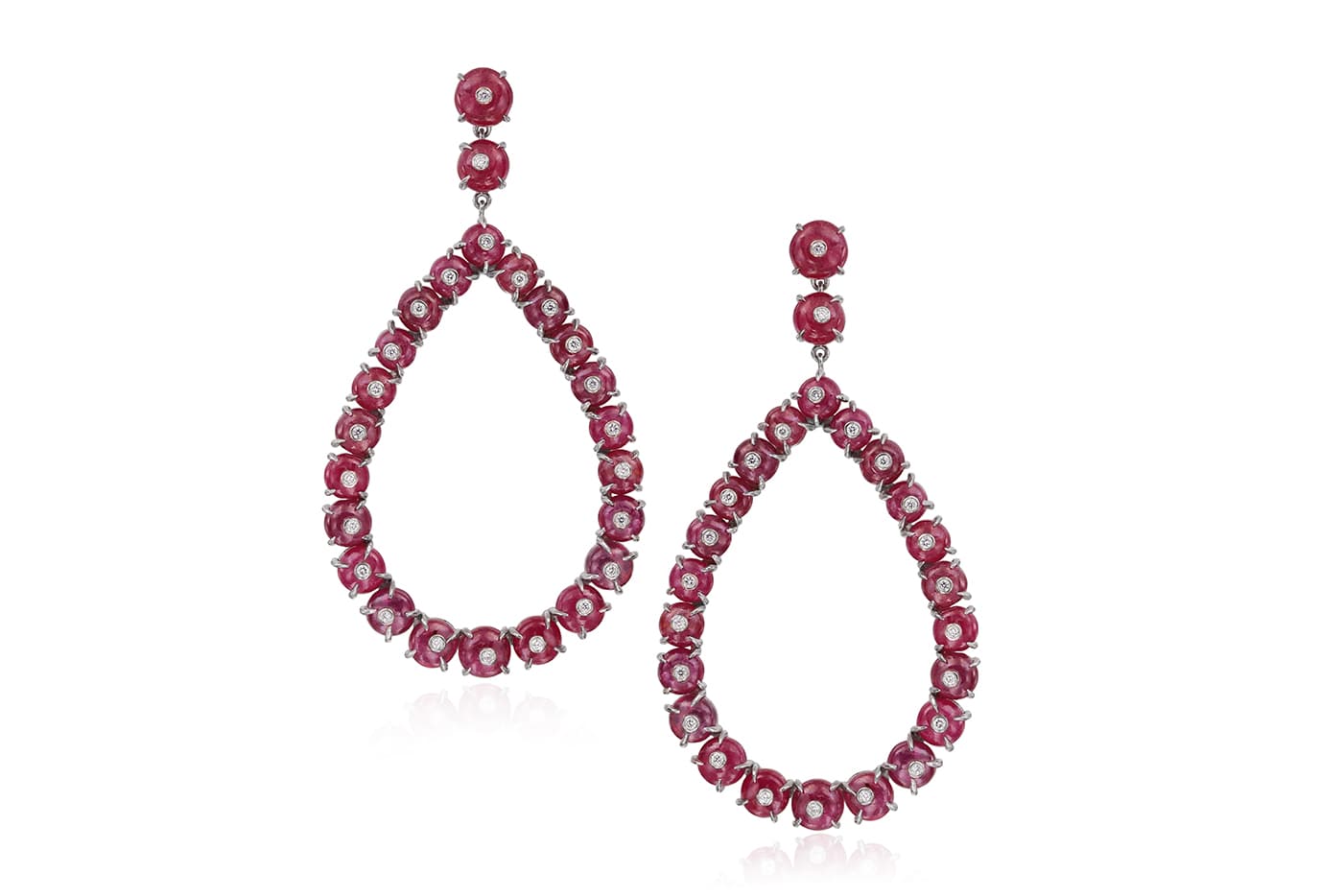
Nina Runsdorf
Nina Runsdorf
Earrings with rubies and diamonds in white gold

WORDS
Jodie Smith is a San Francisco based writer, trend forecaster and creative consultant specialising in the jewellery and luxury industries.
